The genres of anime, like other forms of entertainment, include action, romance, and science-fiction. Interestingly enough, many of these genres involve high school as their backdrop. That makes sense, right? Teenagers are among the biggest anime fans. Therefore, it is understandable that creators make movies and shows that appeal to their target audiences.
We’ve all been to school at some point, and that makes this genre so flexible and relatable: bullies, crushes, weird teachers, trying out for sports teams, and the bittersweet feelings of graduation.
The school anime genre is too deep and diverse. It mostly has a combination of one or more styles in it. They play a big part in making the anime thrilling. Exams, crushes, after-school antics – these school anime discuss all aspects of student life – whether in an ordinary or extraordinary setting.
Schools become a breeding ground for new experiences in these anime. It makes shy characters come out of their shells, tests the mettle of brave jocks, and sometimes even makes rivals reconsider becoming friends. We’ll explore some of the best anime about the school, or, to be more precise, shows where a school is the setting. Because as you’ll see a lot of these shows seem to focus on everything but the school itself.
Koe no Katachi
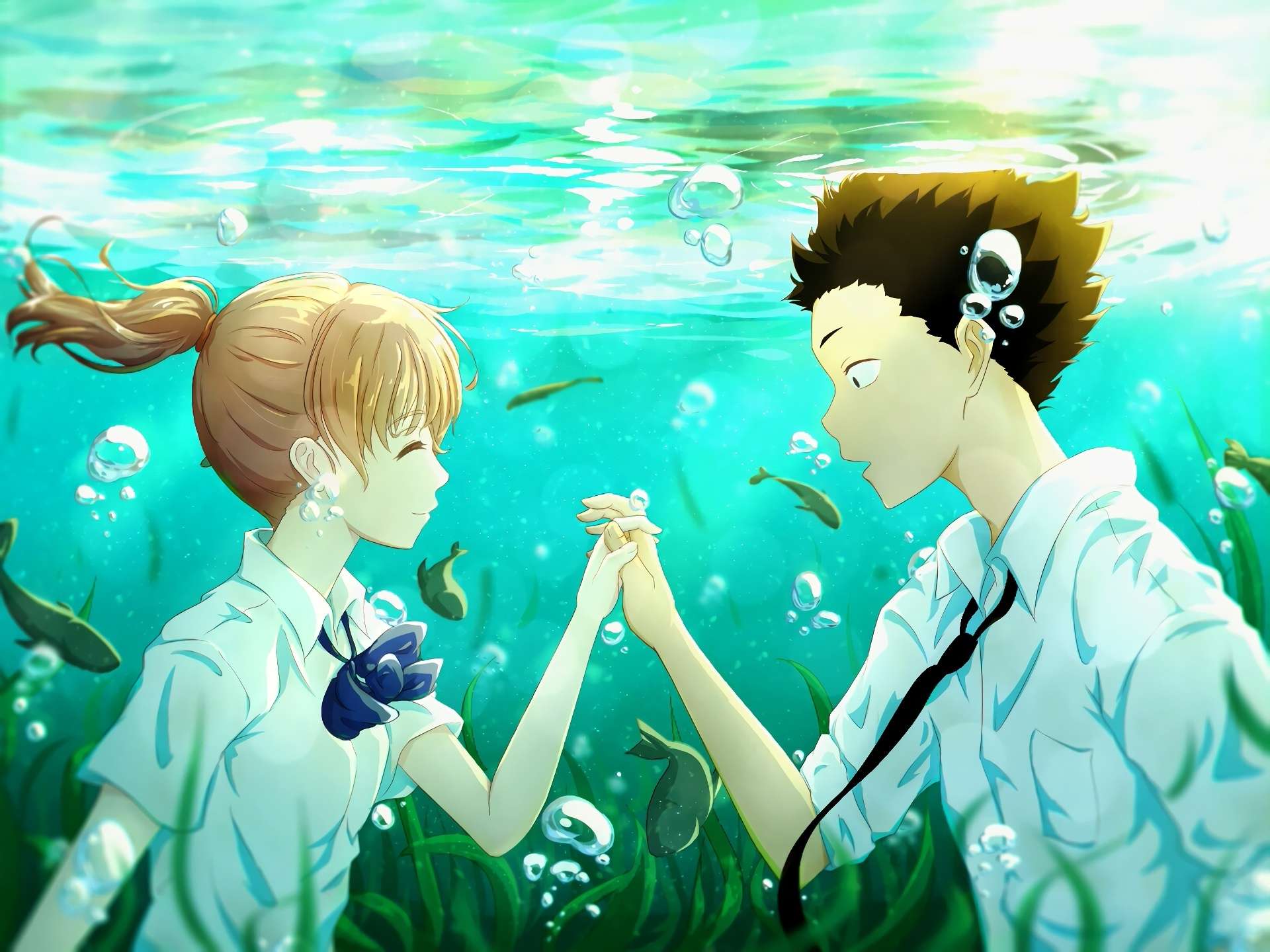
Elementary school student Shouya Ishida used cruel means to beat boredom as a wild youth. Shouko Nishimiya, a deaf student, transfers into Shouya’s class, and the rest of his classmates bully her without thinking.
But when her mother informs the school, he is singled out and blamed for everything. In the wake of Shouko’s transfer, Shouya is left to the mercy of his classmates. Throughout elementary and middle school, he suffers heartless ostracism, while teachers overlook it.
Shouya is still plagued by wrongdoings he committed as a boy, even though he is in his third year of high school. Having deeply regretted his past actions, he embarks on a journey of redemption to make amends with Shouko.
The story of Koe no Katachi tells the heartwarming tale of Shouya’s reunion with Shouko and his attempt to redeem himself while being constantly haunted by the shadow of his past.
Despite the simplicity of the plot, the attention to character development is exceptional. Although the story is mature, it is not dark and gritty, rather, it is presented in a realistic manner with fully developed characters.
The anime forgoes anime archetypes while making its actions relatable or understandable by maintaining internal consistency across all of its characters. The characters are presented in a realistic and tangible manner that gives them a sense of being real – they seem like real people.
The character development in Shouya is impressive. He is an easy character to empathize with, and the film highlights some important societal concerns without romanticizing them. In addition, Shouko’s struggles with a disability are accurately depicted.
Kimi no Na wa

High school student Mitsuha Miyamizu longs to live the life of a boy in Tokyo-a dream that contrasts starkly with her life in the countryside. At the same time, in the city, Taki Tachibana lives a busy life as a high school student while juggling a part-time job and hoping for a career in architecture.
When Mitsuha wakes up one morning, she finds herself in Taki’s body and suddenly living the dream life in Tokyo. Taki also finds himself living Mitsuha’s life in the countryside. They begin to search for one another in order to find an explanation for this strange phenomenon.
Kimi no Na wa. focuses on Mitsuha and Taki’s actions, affecting each other dramatically, tying them into a fabric of fate and circumstance.
As expected for a Makoto Shinkai production, there are a lot of tears and smiles. Despite its simplicity and generic nature, the story’s train metaphors, the idea of hopeless and distant love, and beautiful scenery all contribute to your emotional involvement.
Makoto Shinkai’s films are known for their lovely artwork. The production quality is excellent. You will fall in love with the artwork. His use of color and movement within the frame help you focus on what you need to, but he isn’t skimpy either and doesn’t leave out details if your gaze wanders.
As we read or watch stories in books and films about characters going through high school, we are reminded of our own springtime. Shinkai depicts their relationships well.
Jujutsu Kaisen
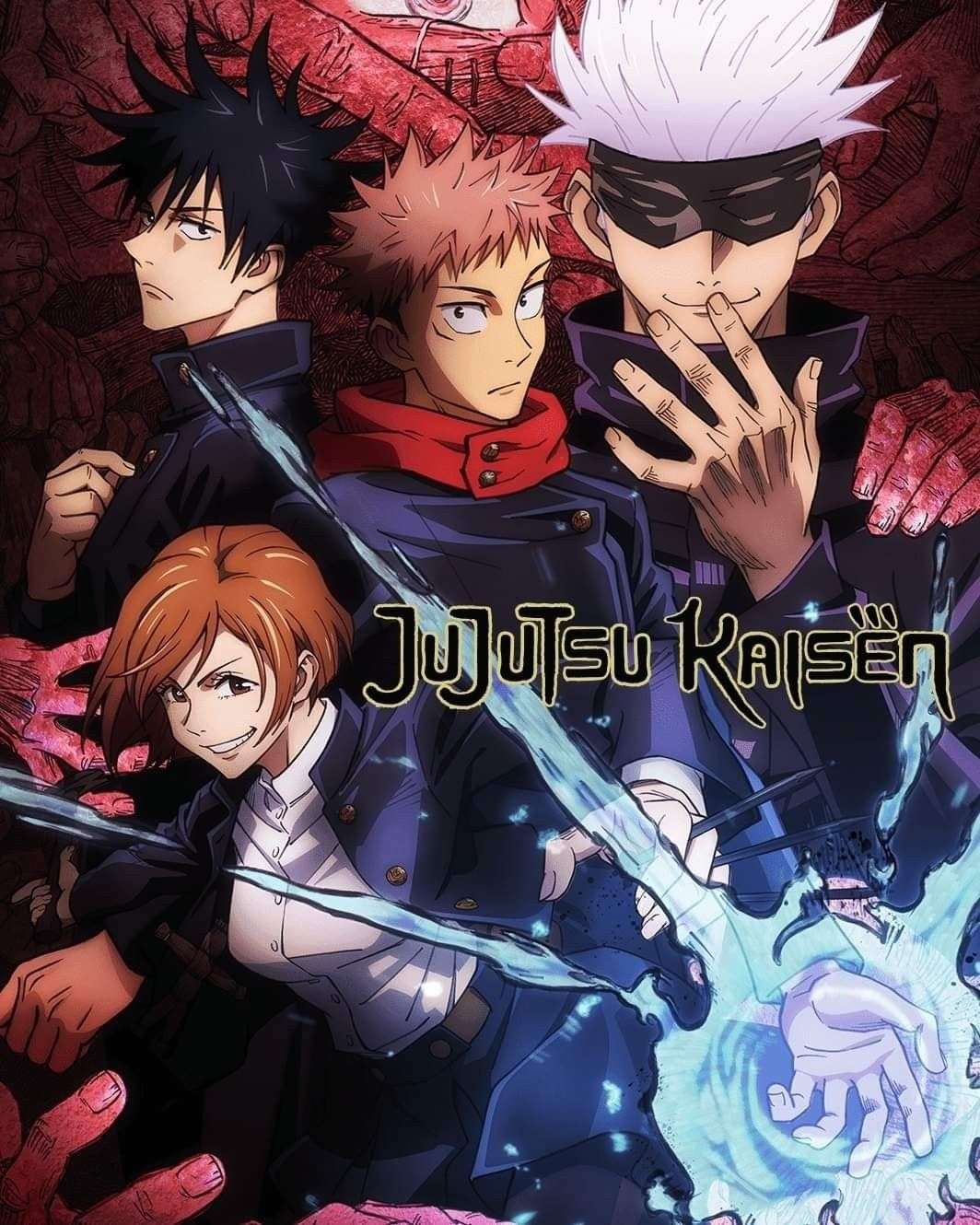
Indulging in pointless paranormal activities with the Occult Club, Yuuji Itadori spends most of his time at the club or visiting his bedridden grandfather at the hospital. When he unknowingly comes into contact with a cursed item, his leisurely lifestyle soon takes a turn for the strange.
After swallowing the item, revealed to be the finger of Sukuna Ryoumen, the “King of Curses,” Yuuji becomes swept up in a series of supernatural events and finds himself thrust into the world of Curses – terrible beings created from human malice and negativity.
When Yuuji discovers his own newfound powers, he experiences first-hand the threat these Curses pose to society. After his introduction to the Tokyo Metropolitan Jujutsu Technical High School, he begins walking down a path from which he cannot return: the path of a Jujutsu sorcerer.
Since its inception, Jujutsu Kaisen has gained a lot of popularity. No matter if you’re a fan of shounen or not, you will enjoy this show. Shounen is just one aspect of it.
There is plenty to keep you interested. In this story, the protagonist doesn’t want to be the leader of the village, group, etc. It is about a boy who wishes to leave a good legacy, who wants to die peacefully and do good for others. The fact that you feel a connection to the characters makes watching a show even more enjoyable, and this is another positive aspect of the anime.
The power system and world-building are quite unique and have an interesting concept in Jujutsu Kaisen. Powers derive from cursed energy. Cursed energy comes from negativity and spite. It is these negative emotions that are used to manufacture negative energy and to launch attacks. This anime has much more to offer, and it will leave you satisfied.
Code Geass: Hangyaku no Lelouch
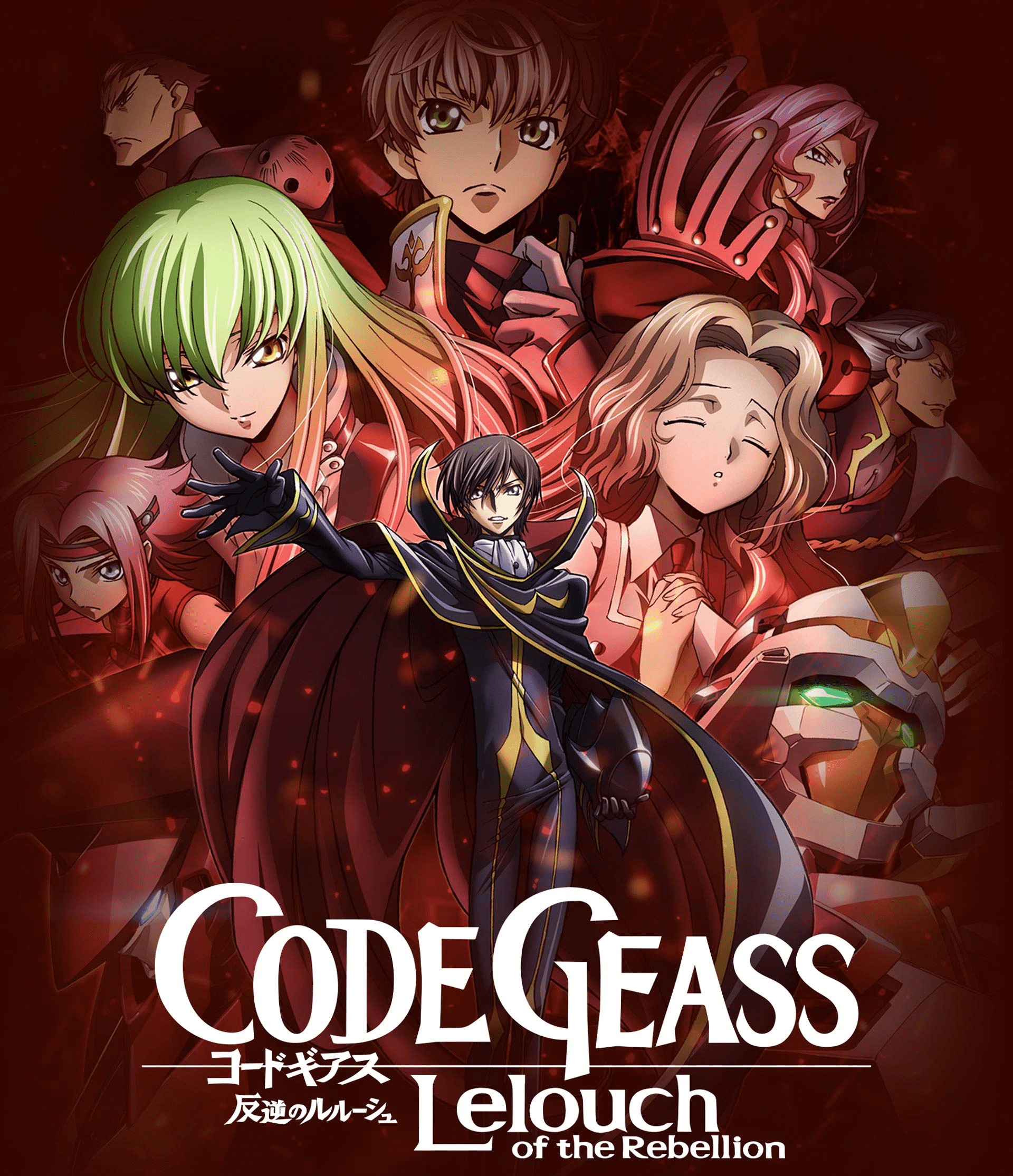
Starting with the conquest of Japan in the year 2010, the Holy Empire of Britannia is solidifying itself as a dominant military nation. Having been renamed Area 11 after its swift defeat, Japan has become actively hostile to these tyrants as it attempts to regain its independence.
The Britannian student Lelouch Lamperouge is unfortunately caught in the crossfire between the Britannian armed forces and Area 11 rebels. He escapes, however, thanks to a mysterious girl named C.C., who bestows upon him Geass, the “Power of Kings.” Once he realizes the vast potential of his “power of absolute obedience,” Lelouch becomes the masked vigilante Zero, fighting mercilessly against Britannia, with revenge as his goal.
The story of Code Geass isn’t particularly noteworthy or unique. It is actually pretty straightforward and a bit cliche, but that is precisely why it is so well-done–even the most straightforward storyline is handled in a fresh, new way that grabs the viewer’s attention. This is a story with enough twists and turns for you to never get bored.
This series has a wide range of characters. Some are quite plain and one-dimensional, whereas others possess a level of complexity that is almost lifelike.
Lelouch is a very human character filled with emotions, opinions, a unique point of view, and a few very serious flaws which make him easy to relate to and sympathize with.
His character is one of the most complex in the series, and he feels real despite his supernatural abilities and a genius intellect. A part of the appeal is its ability to make the audience feel like they can relate to him. It is the main reason why it remains relevant and interesting.
Great Teacher Onizuko

Eikichi Onizuka, a twenty-two-year-old ex-biker gang leader, conqueror of Shonan, and virgin, dreams of one thing: becoming the best high school teacher in all of Japan. When he’s old and gray, he wants a loving teenage wife, and not because of a passion for teaching.
Onizuka is a perverted, greedy, and lazy delinquent, but there’s more to him than meets the eye. Therefore, when he lands a job as the homeroom teacher for Class 3-4 at Holy Forest Academy despite suplexing the vice principal, his skills are put to the test, as this particular class is notorious.
They employ psychological warfare to mentally break any new homeroom teacher they get, forcing them to quit and leave school due to their utter contempt of all teachers. The exception is Onizuka, a teacher who’s up for any challenge that comes his way.
Some of the issues his students face on a daily basis include bullying, suicide, and sexual harassment. Identifying and addressing the causes of their problems, Onizuka helps them through unpredictable and unconventional methods – even if that means jumping from a building to save a suicidal child. Class 3-4 slowly learns how enjoyable school can be when they are the pupils of the Great Teacher Onizuka thanks to his eccentric charm and fun-loving nature.
Despite some cliches, there are some clever plot twists that keep the viewer on their toes. Despite the anime’s moral message, it is primarily fun to watch. You’ll laugh, and you might even cry.
In the end, GTO isn’t very original, but it takes tried and true concepts and injects them with a healthy dose of humor to create a thoroughly entertaining show.
Shigatsu wa Kimi no Uso
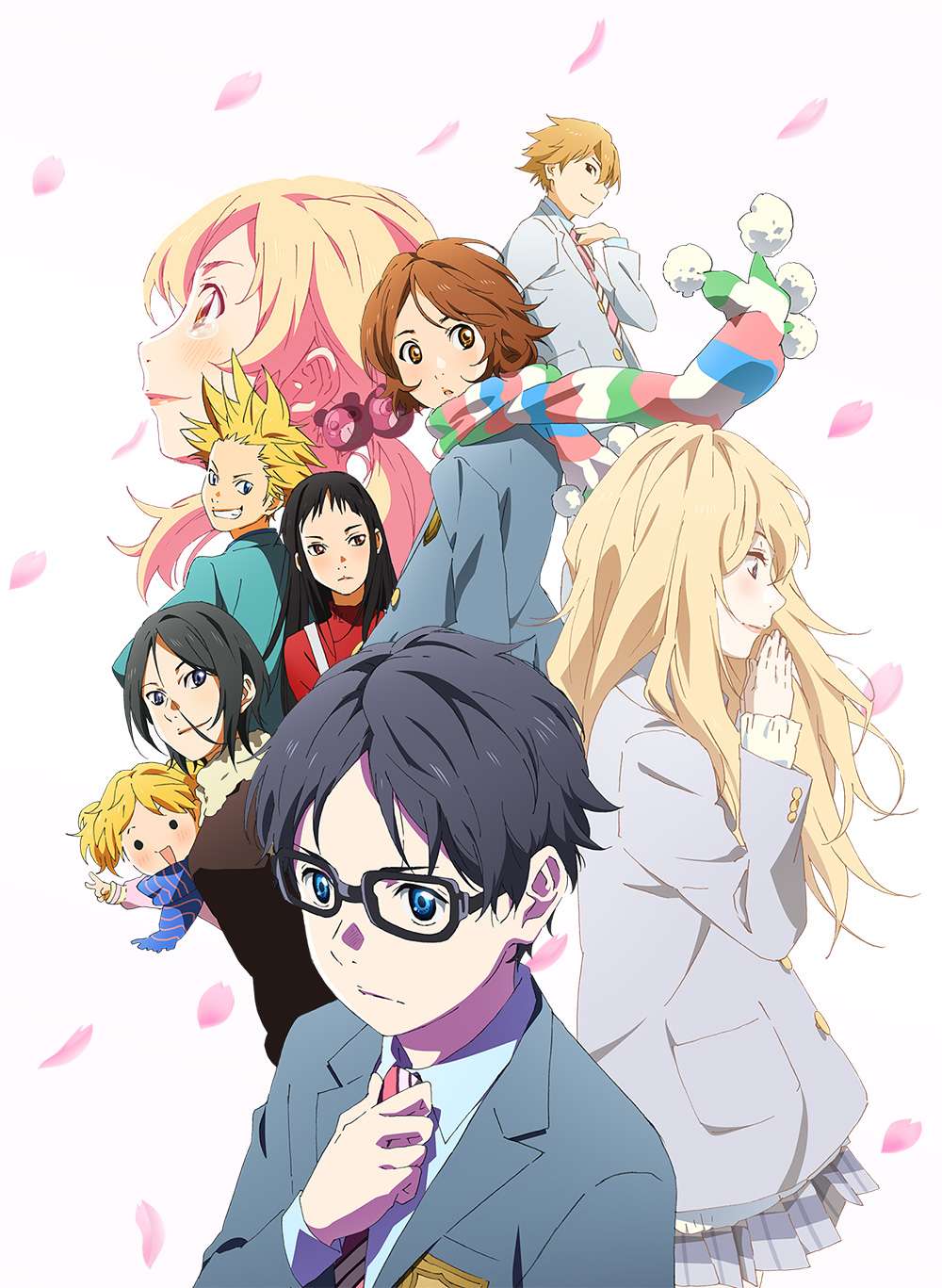
The path of the human metronome, pianist Kousei Arima, is accompanied by music. Following the death of his mother, Saki Arima, Kousei is left unable to hear his own piano after he falls into a downward spiral.
Even after two years, Kousei still avoids the piano, leaving behind his admirers and rivals, and lives a colorless life with his friends Tsubaki Sawabe and Ryouta Watari. Then he meets Kaori Miyazono, a beautiful violinist who stirs up his world and sets him on a journey to once again face the music.
Kousei’s recovery is spelled out in Shigatsu wa Kimi no Uso, in which the idea that music is not just about playing each note perfectly is explored, and that the fresh spring air of April can be evoked by just one melody.
Though the series seems colorful and lighthearted, and its pastel color scheme gives the impression it’s just another romantic comedy. Taking a step back from its false prefaces, we realize that what we are being immersed in is a tragedy in the making.
All of the series’ components contribute to the tragic quality of the series, and yet it isn’t a tragedy per se. In this series, we learn about healing, moving forward, and accepting the parts of ourselves that we’d rather ignore. In addition, it’s about accepting that sometimes we need help to take the first step. It’s also about saying goodbye when it’s time.
In addition to chronic illness and post-traumatic stress disorder, the story explores first love and abuse in childhood. These are all described as horrific; they twist people, they ruin the best moments, and they leave a lasting impact.
Haikyuu!!
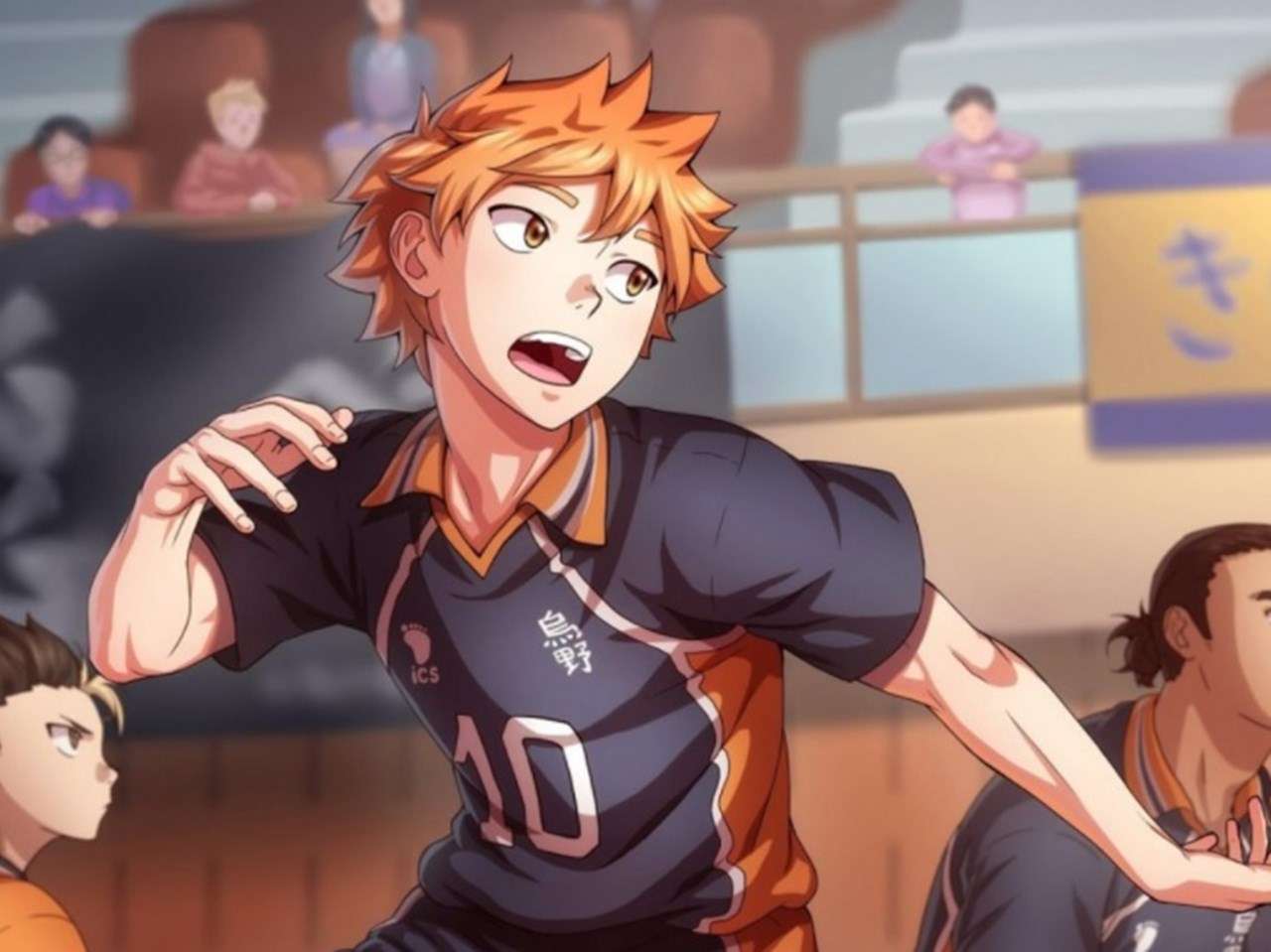
Shouyou Hinata is inspired to revive the volleyball club at his middle school after seeing a volleyball ace nicknamed “Little Giant” in action. Despite making it to a tournament, the newly-formed team loses their first game to Tobio Kageyama, the “King of the Court.”
Hinata vows to beat Kageyama, so when he graduates from middle school he joins Karasuno High School’s volleyball team — only to discover that his sworn rival, Kageyama, now plays with him.
Despite his superior jumping ability, Hinata struggles to find his place on the team due to his short height. Kageyama is dealing with his own problems that only Hinata can solve, and the only way for the team to succeed is to learn to work together. Throughout this exhilarating and emotional sports comedy, two determined athletes attempt to resolve their heated rivalry and make their school’s volleyball team the best in Japan.
It can be summed up as pretty typical shounen stereotypes. Underdogs, teamwork, perseverance, etc. But Haikyuu!! does a fantastic job of integrating all of these themes.
The protagonists are relatively inexperienced, and they are far from being the best volleyball players in the world. There aren’t any inexplicable achievements or crazy, fast level-ups.
Thus, we get a well-written and paced story that follows the Karasuno from the team’s formation to entry into high school volleyball.
A team’s relationships can develop in many ways: through friendship, in different school years, as teammates, or as a unified team against other teams. Volleyball falls in the middle of this spectrum. You can see why it’s so loved by the characters, and you can see how their love developed.
Nichijou
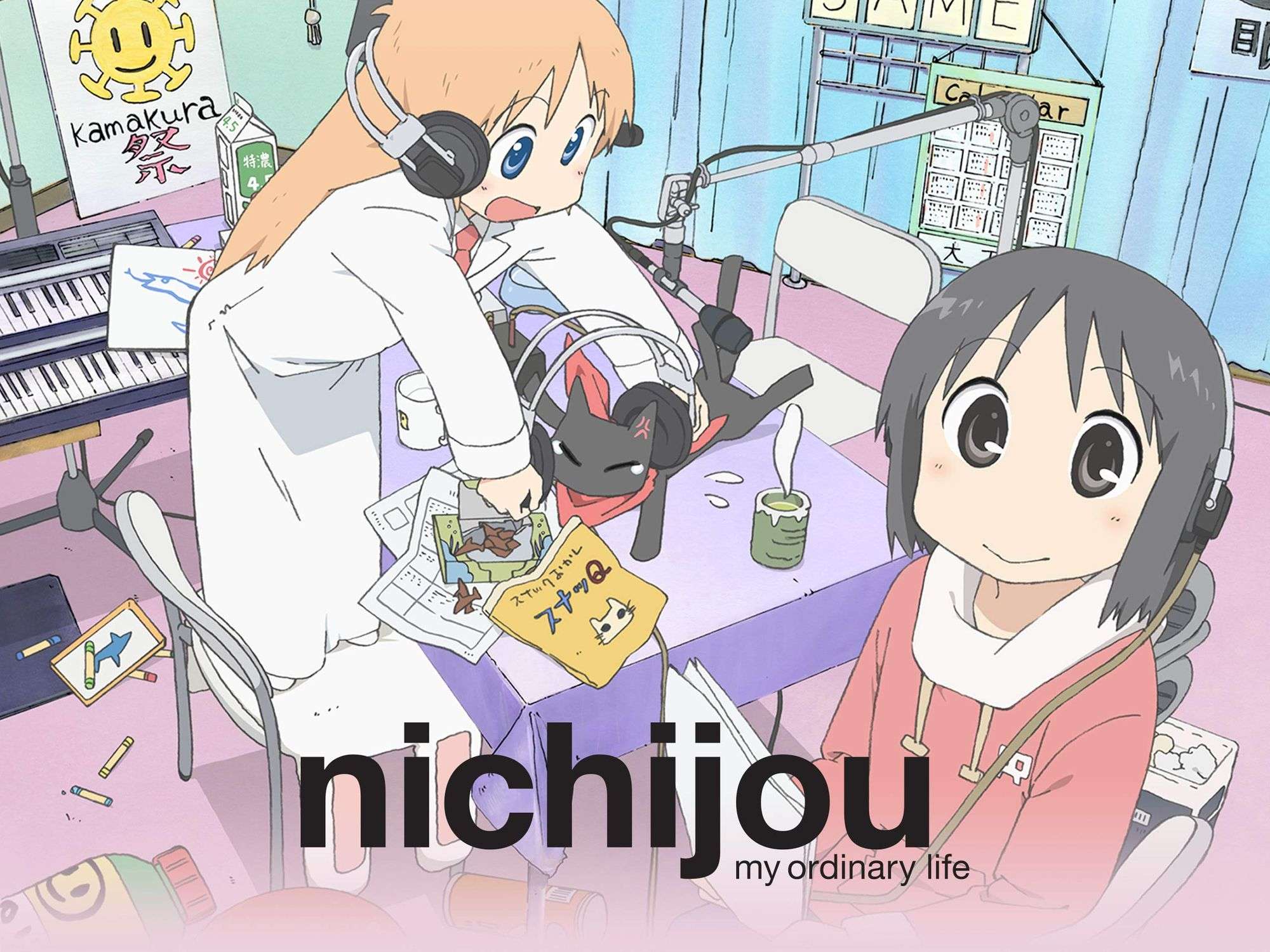
In Nichijou, the stories of three childhood friends—high school girls Mio Naganohara, Yuuko Aioi, and Mai Minakami—intertwine with those of the genius Hakase Shinonome, Nano, her robot caretaker, and their talking cat Sakamoto.
As each day passes, the lives of these six individuals, as well as those around them, get a taste of both calm and madness. Being bitten by a talking crow, walking to school, hanging out with friends, and watching the principal suplex a deer are all part of daily life in Nichijou.
In Nichijou, we experience a fusion of gag, moe, slice-of-life, and slapstick. Nichijou adopts a very light tone with its jokes; they are played fast and loose, and while each episode is paced differently, Nichijou never seems to take itself too seriously.
Unpredictability is prevalent in each episode’s structure. It’s never boring, whether it’s a hilarious dialogue scene, a fast-paced action sequence, a funny random image, or a completely unrelated skit. Even so, Nichijou still manages to strike the right balance between all of its different styles, so that no episode feels too heavy.
Although such a style may seem counter-intuitive for a slice-of-life anime, this ends up working immensely in Nichijou’s favor, adding yet another layer to its absurdity. Nichijou’s characters aren’t unique, but how they interact with each other is what makes them great. Characters from various groups clash, contrast, and complement each other in interesting ways.
Saiki Kusuo no Ψ-nan

A psychic ability might seem a blessing to an average person; for Kusuo Saiki, however, this couldn’t be more false. With a wide array of supernatural abilities, ranging from telepathy to X-ray vision, rather than a blessing, this so-called blessing is a curse to him. All Kusuo desires is an ordinary, hassle-free life – a life where ignorance is bliss, as all the inconveniences his powers cause pile up.
Life as a psychic is unfortunately not quiet. While Kusuo keeps the secret of his power from his classmates in an effort to stay out of the spotlight, he ends up attracting the attention of many strange characters like the empty-headed Riki Nendou and the delusional Shun Kaidou. Due to the craziness around him, Kusuo learns that the ordinary life he has been aspiring to have is much more difficult to achieve than he previously thought.
In each episode, there is another core story, but the main story – Saiki Kusuo has special powers – runs through all the episodes. You’re sometimes taken by surprise by unexpected moments.
The characters are all well-developed and unique, and all of them are well-connected. Anyone Saiki meets, including his family and classmates, is weird. They’re all funny and awesome in their own way, and they won’t leave him alone.
Psychic powers are used in a variety of ways in this anime, making it so enjoyable. Every episode feels very different from the others because of their multiple purposes.
You will laugh all the time while watching this anime because the humor itself is quite fast-paced and manages to be constantly funny. There is just enough screen time for all of the side characters to become memorable, yet they never feel overused.
Kaguya-sama wa Kokurasetai: Tensai-tachi no Renai Zunousen

At Shuchiin Academy, the top two student representatives are Miyuki Shirogane and Kaguya Shinomiya. As a top student in the country who is respected by both his peers and mentors, Miyuki is the student council president. Alongside him, the vice president is Kaguya, the eldest daughter of the Shinomiya family, who excels in every field. They are regarded as the perfect couple by the entire student body.
Despite the fact that both of them have already developed feelings for the other, neither is willing to admit it. In this case, the first to confess losses will be looked down upon, and will be considered less. Both Miyuki and Kaguya are equally determined to be the ones to emerge victorious on the battlefield of love!
It is an excruciatingly relatable story. Even their failures are enjoyable to watch since their approach to love is so misguided, but their mind games are entertaining. Both of them are walking disasters. They are mocked for this through irony and sarcasm deployed by the supporting characters.
Through its wildly contrasting tones, visual excitement, and music, it creates a dynamic comedic experience. Our two main characters have a lot of character interaction and a silent monologue throughout the series. There is a catch, however, because the characters’ inner selves are different from what they appear to others to be.
Telling someone you love them can be terrifying. But growing up is even more difficult. Kaguya and Miyuki are steadily and gradually navigating through their tangled emotions. It has perfect timing, expert directing, and relatable characters. It subverts the standard tropes of the genre in an interesting way, regardless of whether you like anime rom coms or not.
Sakamichi no Apollon
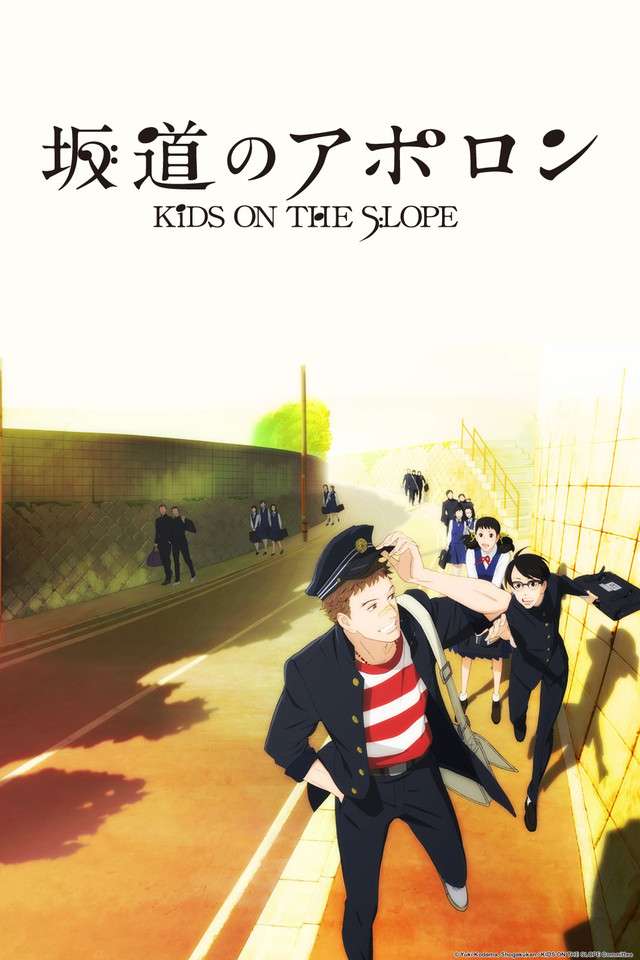
Kaoru Nishimi, a classical pianist who is a top student, has just arrived in Kyushu for his first year at high school. As a result of moving constantly since he was a child, he has abandoned all hope of fitting in, and is preparing himself for another year of meaninglessness and loneliness. Up until he meets Sentarou Kawabuchi, a notorious delinquent.
Sentarou’s seemingly unending love of jazz music inspires Kaoru to learn more about it. So his shell slowly starts to come off, and he makes his very first friend as a result. He begins playing the piano at Ritsuko Mukae’s family record shop in the basement, where after-school jazz sessions are held every day.
As Kaoru experiences the joy of using his musical talents to entertain others and himself, the summer might end up being one he will never forget. Sakamichi no Apollon is an uplifting story of friendship, music, and love, which follows three individuals brought together by the mutual love they have for jazz.
Despite being simple and down to earth, the story excels at handling most of its genre elements. It combines romance, drama, and music at the perfect pace. There are no fillers, and everything feels very natural.
Even though they make an odd couple, the main characters in the series are best friends. Both characters are well developed. You can see the two characters grow up throughout the story.
You want to keep watching the anime because of the strong bond between the main characters. The series is very enjoyable as a whole. You’ll definitely enjoy watching this series if you’re a fan of jazz music or good music in general.
Ansatsu Kyoushitsu
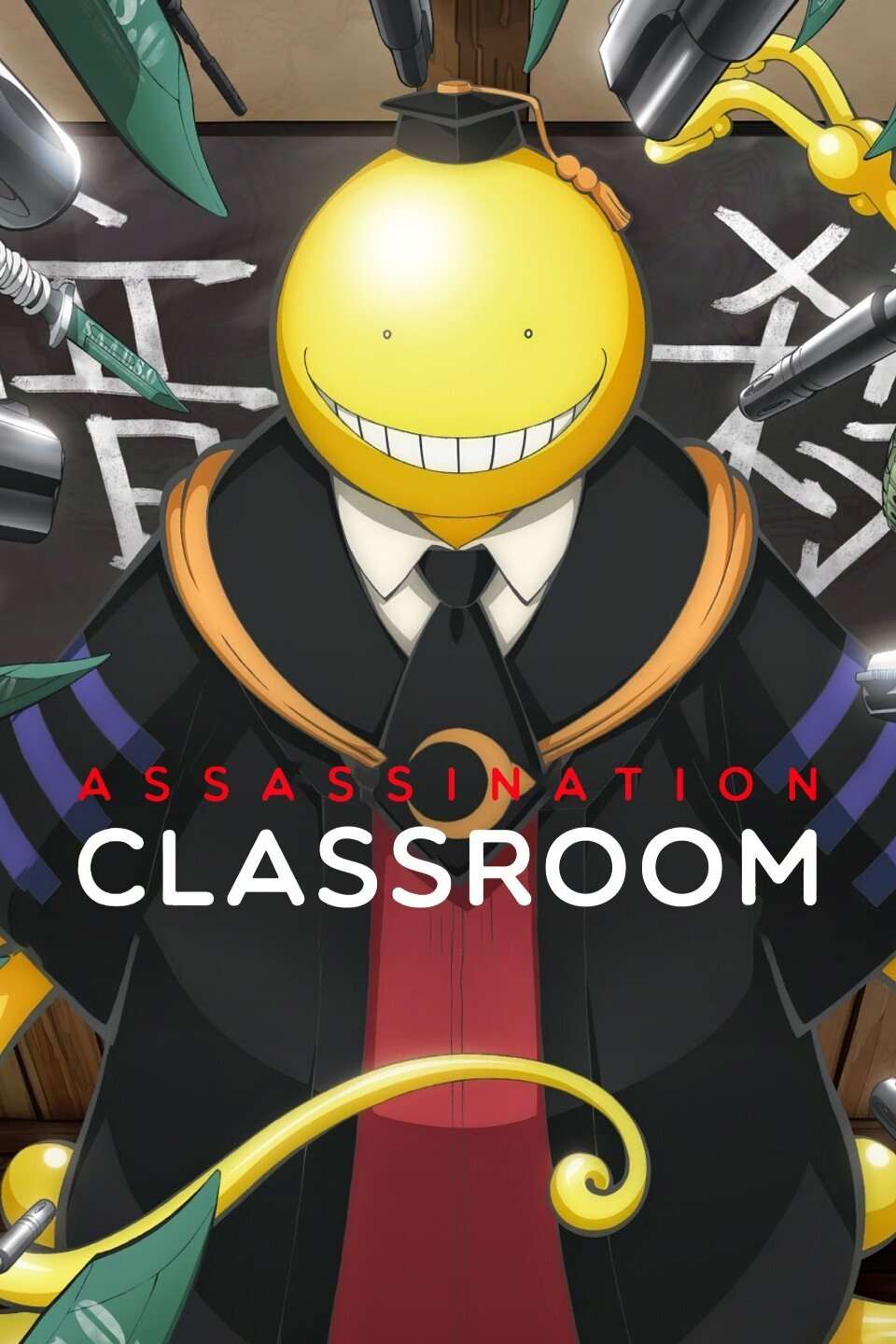
The students belonging to class 3-E of Kunugigaoka Middle School are given a task that seems impossible when a mysterious creature chops down the moon to a crescent shape: assassinating the creature responsible for the disaster before Earth is wiped out.
Koro-sensei, however, is able to fly at speeds of up to Mach 20, which he displays freely, leaving any attempts to subdue him in the dust. Additionally, 3-E’s misfits soon realize that the strange, tentacled beast is more than indomitable-he is also their best teacher!
In Ansatsu Kyoushitsu, these junior high school pupils develop their assassination skills as they rise against the oppressive school system, their own problems, and one day, their teacher Koro-sensei.
The plot of this anime is one of the most original and original stories in the anime and manga industries, and it utilizes its main themes of assassination and education to its greatest advantage, enabling it to build and distinguish its impressively large cast while expressing many other noteworthy themes such as friendship, class and discrimination, failure and defeat, and human perseverance.
Assassination Classroom has many didactic and morally powerful lessons, not only motivating but also inspiring.
While helping each student with their personal and academic troubles individually, Koro-sensei also shows them how assassination and education bond them together.
It is evident in this regard that the underlying theme of assassination gives the characters an opportunity to learn about each other and about Koro-sensei, and, ultimately, this allows them to grow both individually and collectively.
Regardless of how harsh or dejected reality may seem, one must persevere and work their way to improvement.
Hyouka
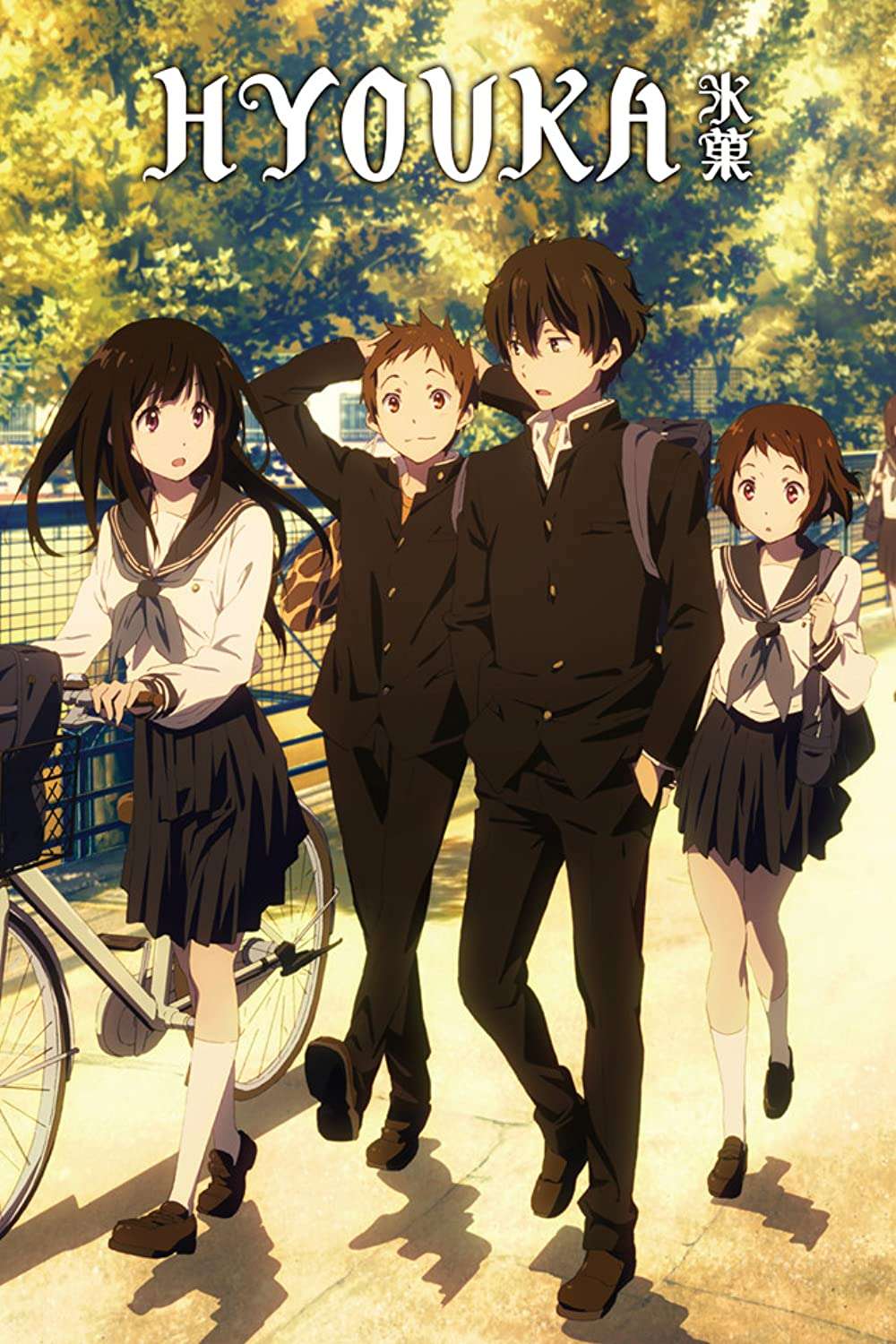
High school student Houtarou Oreki has only one goal: to save energy as much as possible while living a gray life. Sadly, his peaceful days are shattered by his older sister, Tomoe, forcing him to save the memberless Classics Club from disbandment.
Eru Chitanda, one of Oreki’s fellow first-years, had already become a member of the club when he headed to the clubroom. While his obligation has been fulfilled, Oreki finds himself entangled by Chitanda’s curious and bubbly personality, joining the club of his own volition.
Hyouka follows four members of the Classics Club – including Oreki’s friends Satoshi Fukube and Mayaka Ibara – who are driven by Chitanda’s insatiable curiosity to solve the trivial yet intriguing mysteries that permeate their daily lives.
It is not just the mysteries that make this anime so enjoyable. Character interaction is also a key factor. There are four main characters in this anime. Each character plays a different role in the mystery. At times, these roles change. It’s fun to solve the mysteries. It’s great to watch the characters interact.
In the anime, each character also undergoes character development. It is an example of how to achieve the high school slice of life genre as the relationships between our characters are compelling yet incredibly realistic, with each action being true to the psychology of high schoolers and how they make decisions.
In Hyouka, there are other characters who interact with the club because the series takes place in a school setting. Several of these are often part of mysteries, requiring a variety of skills from the clubs to solve.
Doukyuusei
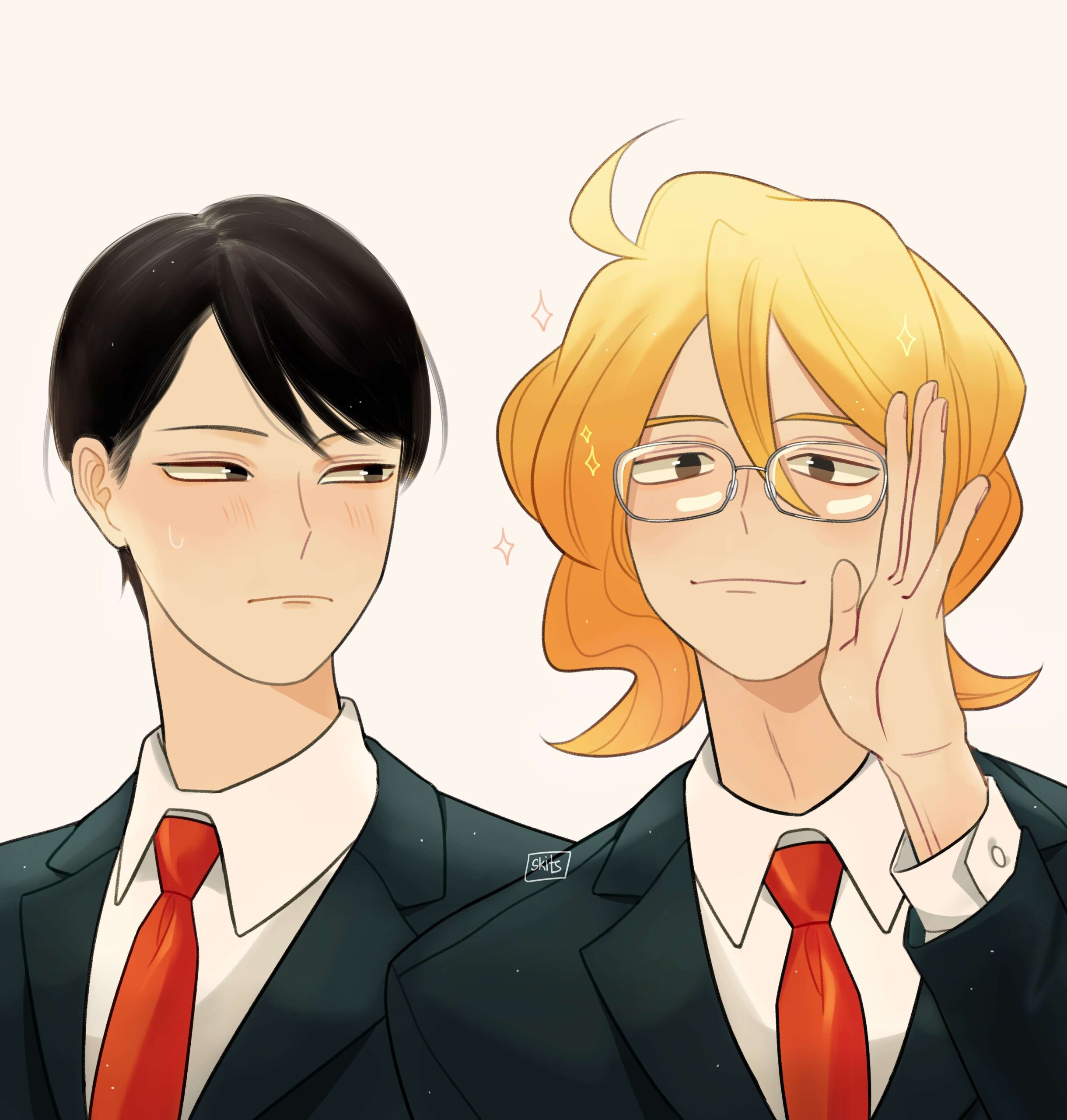
A carefree, normal boy in a rock band, Hikaru Kusakabe is always focused on the present. The entire class must participate in a chorus festival during the summer. In a strange coincidence, he discovers Rihito Sajou, an honor student with great grades, practicing his singing by himself. It seems Sajou can never seem to get their class’ song right, and Kusakabe, delighted at discovering a softer side to his straight-laced classmate, steps in to help him.
Despite their totally opposite personalities and lives, they begin to grow closer over time. Nevertheless, what will happen to them and their growing relationship when they face an unsure future?
The settings perfectly reflect the ups and downs of a relationship in such a short period of time without feeling rushed or forced. Beautifully portrayed are the pleasure of love, the misunderstandings, the light drama, and the resolution.
A very unique art style contributes greatly to the enactment of the story. In these rough-sketch-like pictures and animations, the essence of youth romance is perfectly captured. It gives off this feeling of effervescence with its brightly tinted pictures as if it were taking you to the sky.
Kusakabe is a musician who spends most of his time with friends and practicing with his band, while Sajou is a quiet academic who spends most of his time at cram school and worrying about college. It’s adorable how they deal with each other.
Rather than having a push-and-pull relationship, both characters show equal amounts of love for each other. Supporting characters provide drama to the story and a deeper appreciation of the MCs’ feelings for each other. Cast members are kept to a minimum, which is a good choice since the movie is already packed and only lasts for an hour.
Tsuki ga Kirei

Each new school year brings new classmates, and Kotarou Azumi and track team member Akane Mizuno end up in the same class during their final year of junior high. Even though they are initially complete strangers, a few chances encounter ignite a desire within them. In the collision of their paths, young love slips into their lives through a longing gaze and a fluttering heart.
Despite being patient and kind, love is not always simple for Kotarou and Akane. In spite of their comfort in each other’s company, heartbreak and anxiety accompany the pursuit of their feelings.
As a result of the uncertainty regarding what the other feels as well as the competing affections of those around them, it is unclear what lies ahead. Yet, under the shining light of a full moon, Kotarou gathers up his courage to ask Akane a question that forever changes their relationship.
Over time, the story develops well. There are a lot of scenes and actions that are all done at once without it really feeling rushed. It moves along at a reasonable pace. While each episode is separated by significant amounts of time-lapsing, this is not an issue. The characters develop at a pace that is not too fast for viewers to understand, nor too slow to become boring.
The simplicity of Tsuki ga Kirei makes it stand out. There is a wonderful development of relationships between the characters, not only between the main characters but also between the extra characters who add some atmosphere to the story. If you enjoy romance and slice-of-life stories, you should watch it.
Seishun Buta Yarou wa Bunny Girl Senpai no Yume wo Minai

As a rare and inexplicable condition, Puberty Syndrome is considered a myth. Almost no one recognizes the symptoms of this rare disease, as they are so supernatural that it only affects teenagers. From personal experience, high school student Sakuta Azusagawa knows that it is quite real, and is quite common at his school.
Mai Sakurajima is a high school student in her third year who was famous as a child actress in her youth but recently halted her career for reasons unknown to the public. Known for her unapproachability, Sakuta never interacts with her until he notices her wandering the library in a bunny girl costume.
No one seems to notice her despite the getup, and when he confronts her, he realizes she is also suffering from Puberty Syndrome. As Sakuta tries to help Mai, he comes into contact with more girls suffering from the mysterious disease.
There are two main characters, but they have very different personalities, so the contrast makes the characters come to life. These characters aren’t your typical high schoolers with the same generic background as most high school series. Their chemistry is excellent. They tease one another and always try to one-up one another, while also sharing secrets with one another.
Even when they discuss mundane topics, their conversations are interesting. It has an interesting story and even we are invited to think about how to resolve the problems they face in each episode.
If you enjoy animes that do not use cliches, that have engaging characters, romance that progresses, and of course, a good protagonist, then this is an anime you should watch.
Danshi Koukousei no Nichijou

Three close comrades roam the halls of Sanada North High School, an all-boys school: the eccentric and hyperactive Hidenori, the passionate Yoshitake, and the rational and prudent Tadakuni. In their vivid imaginations, at least, their lives are filled with giant robots, true love, and intense drama.
It’s just an ordinary trio of ordinary guys trying to pass the time, but who said life couldn’t be interesting? The absurd situations in Danshi Koukousei no Nichijou are anything but mundane, whether it’s an elaborate RPG reenactment or a romantic encounter on the riverbank at sunset.
The story is a standard slice-of-life story, but one that works very well. It’s divided into segments and focuses on a lot of characters, each with his own individual quirks and afflictions as he undertakes everyday tasks.
Since most segments are short, the comedy tone is light, random and fast-paced, making it incredibly enjoyable. The story isn’t amazing or complex since it’s a slice of life, but the setting and timing of the comedy match are so perfect that you don’t care about how simple the plot is.
The anime is strongest in terms of its characters since most of the punchlines are based entirely on the characters in most scenes. There is something very good about this series – the main character does not dominate every scene, in fact, he does not even appear in two or three episodes. All of the secondary characters play right into character stereotypes, but with an interesting twist.
Tokyo Revengers
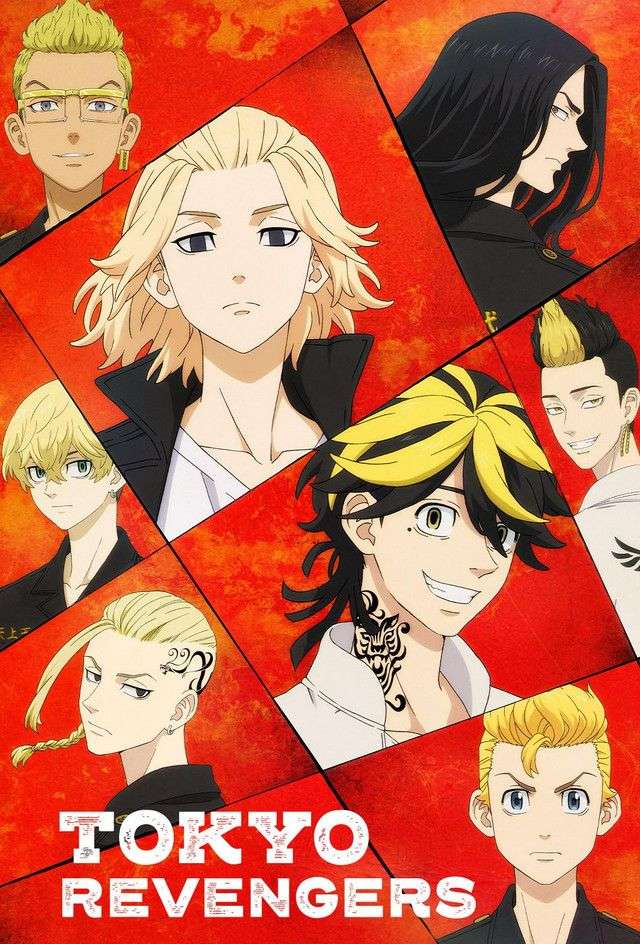
The second year of Takemichi Hanagaki’s middle school life was his happiest. In addition to respect, he had a group of friends he could trust and even a girlfriend. Those were the days twelve years ago. He is now an irrelevant nobody, made to constantly apologize to his younger boss and mocked by children.
Suddenly, a news report surfaces about Tokyo Manji Gang’s brutal murder of the only girl he ever loved along with her brother only adds insult to injury. Before a train ends Takemichi’s miserable life, he flashes back to twelve years ago, when he was still dating Hinata Tachibana.
After reliving the very same day that began his downward spiral, Takemichi meets Hinata’s younger brother. He admits without thinking that he has died before flashing back to the past. Before he mysteriously returns to the future, Takemichi urges him to protect his sister.
Amazingly, he is still alive. What’s stranger, things have changed in the future.
Takemichi appears to be able to alter the flow of time. In an attempt to prevent his ex-girlfriend’s tragic death, Takemichi decides to fly through time to alter the course of events.
Characters and their stories create an intense atmosphere, making 20 minutes seem like only a few seconds. This show has great character development, and it never disappoints. Almost everything is interconnected. Each episode gets right to the point, leaving you wanting more.
Characters are well-written, lovable, and for the most part realistic, without supernatural elements or powers, just good, ordinary people we come to love.
SKET Dance

The SKET Brigade is a special club at Kaimei High School dedicated to helping others. Kazuyoshi “Switch” Usui, the tech-savvy otaku who speech synthesis software to speak provides the brains, and Hime “Himeko” Onizuka, the hockey stick-wielding girl who used to be called “Onihime” provides the brawn. Then, last but not least, their leader is Yuusuke “Bossun” Fujisaki, who is able to evoke the awesome power of extraordinary concentration with his goggles.
They are, however, only known to most of the school as the club that handles odd jobs. The clubroom is where they spend most of their time, slacking off, but when something needs to be done, they do all they can to help others-usually in an unintentionally humorous manner. All SKET Brigade members provide support, kindness, encouragement, and troubleshooting to any student crazy enough to ask.
It is mostly the interactions between the main cast members themselves or between the main cast members and supporting characters, that make the series fun. Most of the supporting characters are extremely strange and hilarious.
As a school production with comedy at its core, it is not an easy task as it tends to have too many clichéd objects, but that is where SKET Dance truly shines. Although SKET Dance is largely humorous, it also achieves what it is really about — helping others.
In every episode, whatever the request may be, the SKET Club completes the task assigned and ends the episode on a high note while also being true and original.
Horimiya
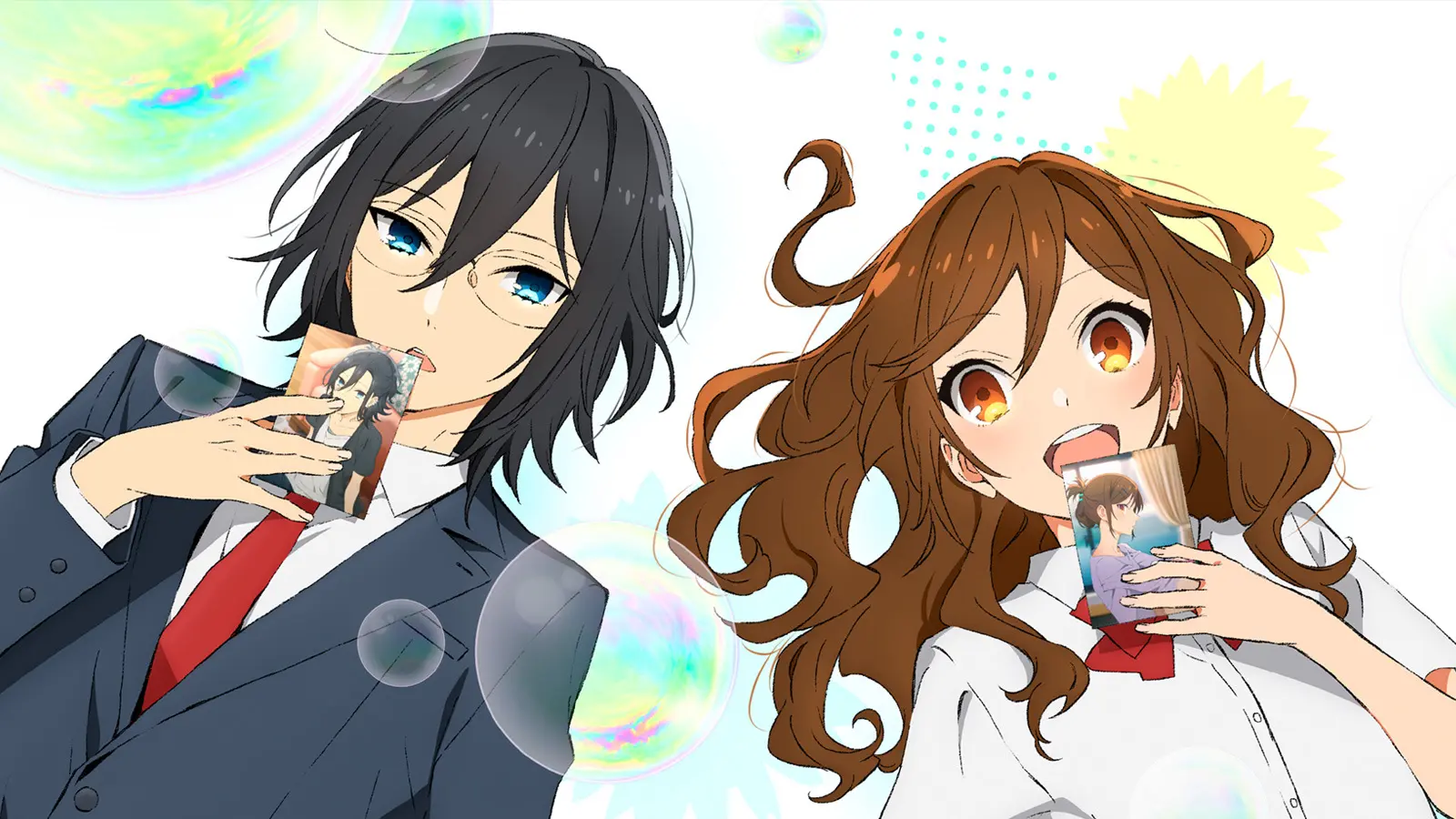
At first glance, the thought of Kyouko Hori and Izumi Miyamura getting along would seem absurd. Ultimately, Hori mixes beauty and brains perfectly, while Miyamura appears distant and meek to his classmates. However, a fateful meeting between them reveals both of their hidden selves.
Hori is rather popular at school, but she has little time to socialize with her friends because of her housework. As for Miyamura, he lives under the noses of his peers, with tattoos and piercings that make him seem like a gentle delinquent.
Although they have opposite personalities, the two quickly become friends and spend a lot of time together at Hori’s house. As they emerge from their shells, the two share aspects of themselves that are not visible to the rest of the world.
In the story, a misjudgment leads to a wonderful friendship based on a surprise interaction. This show features a cast of interesting characters and wonderful interactions between them.
Hori is sweet and kind and very hardworking, but on rare occasions, she has a temper, likely because she’s surprised or unsure. The character of Izumi is extremely relatable in regards to who he is, a guy who doesn’t like being around people and has real feelings when dealing with all these new friendships placed upon him. Meanwhile, their friends support each other greatly.
Art, characters, song, etc., in the first episode, will hook you. There isn’t a character you won’t like! Horimiya is a standout in this genre. This anime is where you can put your feet up, with a cup of tea, and relax and enjoy some top-quality entertainment.
Kuroko no Basket
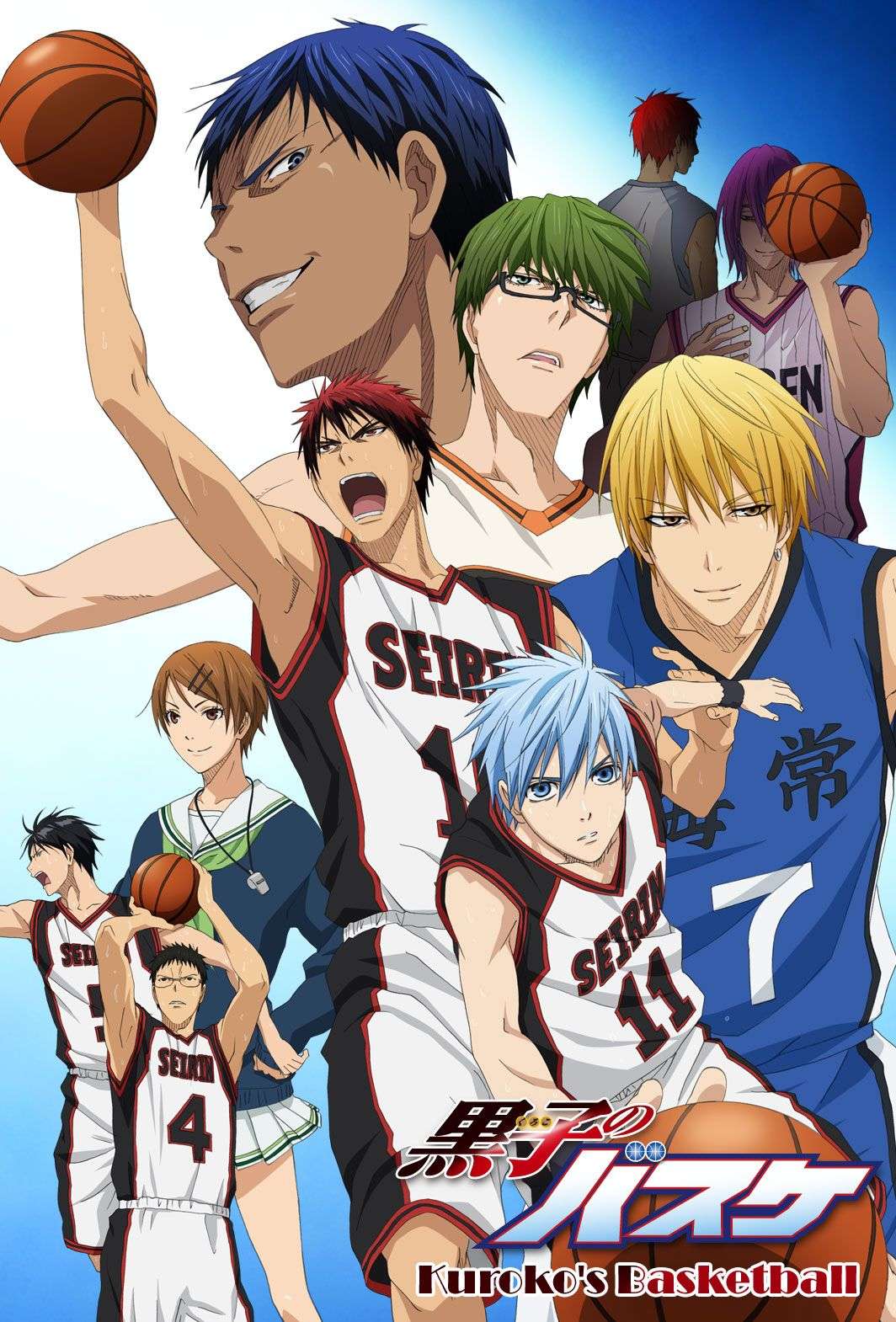
A legendary lineup of players from Teikou Middle School has dominated the national basketball scene for the last three years: the “Generation of Miracles.” The team was made up of five prodigies who excelled at the game, but a “Phantom Sixth Man” lurked in the shadows and gained the team its fame. As a result of their monstrous growth, they became desensitized to the sport they loved and parted ways in high school.
Recruiting new players, the Seirin High School basketball team recruits freshmen Taiga Kagami and Tetsuya Kuroko, both of whom have differing abilities. Kagami, who recently returned from America, has both a natural talent and a passion for the sport. Kuroko, however, lacks presence and exhibits no outstanding athletic skills. Later, he is revealed to be Teikou’s Phantom Sixth Man–the player once associated with the Generation of Miracles.
Kuroko wants to show Seirin that he is a strong individual in his own way. Seeing his determination, Kagami forms a dynamic partnership with Kuroko, who vows to support Kagami’s “light” as his “shadow.” Together, the two aim to conquer the Interhigh championship, but Kuroko’s former teammates’ reappearance complicates their plans.
It’s not so much a giant monster that destroys everyone; it’s more of a little guy that causes a lot of hype, and we can’t wait to see what fate has in store for him, and he’s definitely the underdog.
You will discover his rivals’ traits and appreciate the anime just as much for its school and story elements as for its sports content. It’s packed with action and story and has just the right amount of both! It has ridiculously good character development, and you get to know all the best players from the best teams.
https://www.youtube.com/watch?v=l8AgFqbKjGA
Chihayafuru
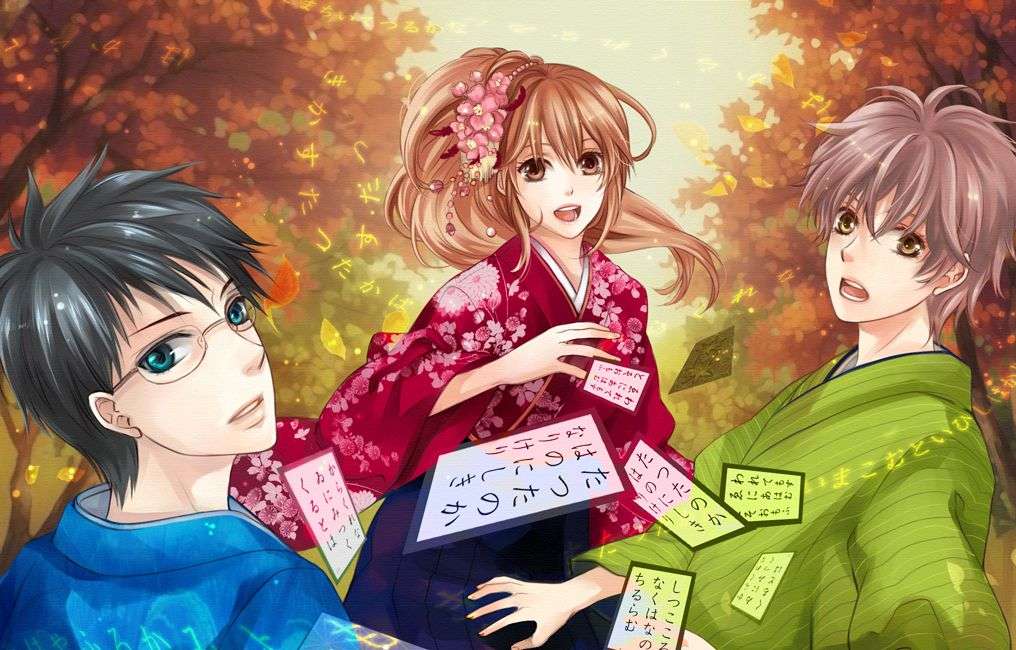
Chihaya Ayase, a tomboyish, strong-willed girl, grows up under the shadow of her older sister. As she has no dreams of her own, she is content with what life has to offer until she meets Arata Wataya. She is introduced to competitive karuta by the quiet transfer student in her elementary school, a physically and mentally challenging card game based on the Hundred Poets classic Japanese anthology.
Arata’s passion for the game and the possibility of becoming the best in Japan inspire Chihaya to fall in love with karuta. She joins the local Shiranami Society with Arata and her haughty but hard-working friend Taichi Mashima. They spent their idyllic childhood days playing together before circumstances separated them.
Chihaya has grown into a karuta-obsessed high school student. Aspiring to compete at the national championship at Omi Jingu, she plans to establish the Mizusawa High Competitive Karuta Club. As Chihaya reunites with the now indifferent Taichi, her dream of establishing a karuta team is a step closer to becoming a reality: she must find others who share the same passion for the game as she does.
What this show offers is more than just card games. Karuta, in the eyes of Chihaya, the protagonist of the series, is also about creating a dream for herself and about the bond that she formed with Arata and Taichi when she was 12.
Although romance plays a role in the story, it is merely a development element. The story centers more on the love of friendship and the game itself than on any romantic moments.
Chihayafuru has primarily character-driven plots, which can in its own way provide heart-wrenching entertainment. Each character has a characteristic to love, from their design to their personality.
Shokugeki no Souma
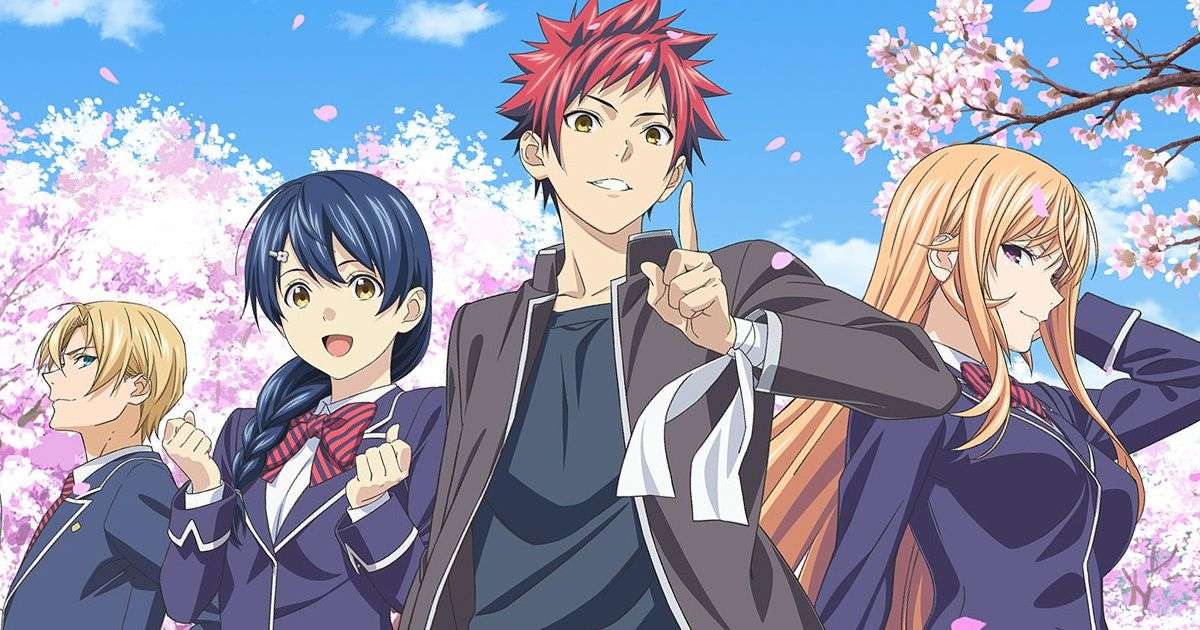
Since he can remember, Souma Yukihira has been cooking with his father Jouichirou. His years of experience as a sous chef at his father’s restaurant have allowed him to develop culinary expertise and create new dishes that amaze their customers. The young chef hopes to surpass his father’s skill and take over the restaurant one day, but when he learns that Jouichirou is closing his restaurant so he can take a job in New York, he is shocked.
Souma instead of following in his father’s footsteps enrolls in Tootsuki Culinary Academy, where only 10 percent of students graduate. The school is known for its cooking competitions called “Shokugeki,” which settle disputes and arguments between students. Jouichirou tells Souma that to surpass him, he must survive the next three years and graduate from Tootsuki.
If the young chef hopes to fulfill his dreams, he will have to learn how to navigate the academy’s brutal curriculum and competitive student body. But can skill alone propel him to success?
Throughout the show, Souma shows himself to be a professional chef candidate by attending the culinary academy. Along the way, he also forms meaningful relationships with others, including friendships and rivalries.
Shokugeki no Souma achieves entertainment through both storytelling and characters. The cast consists of a variety of personalities. When it comes to Souma, what matters most is how they interact with others. Therefore, it brings out the best and the worst in them.
After watching this show, you may have a new perspective on food. The show, Shokugeki no Souma, adapts battle shounen to food dishes is equally as beautiful and tasty. This is an entertaining story about a guy who cooks for others rather than for his own enjoyment.
Asobi Asobase
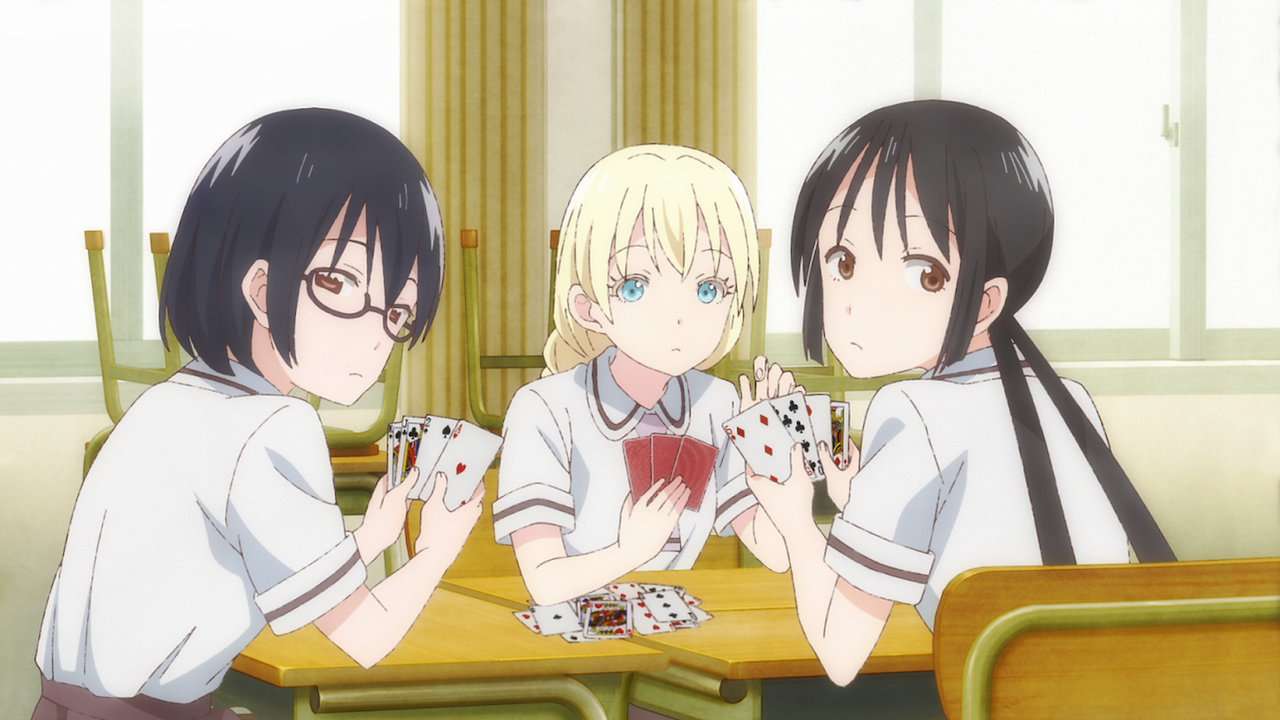
Foreign transfer student Olivia, who does not know English, plays look the other way with Hanako Honda, a loudmouthed airhead, during recess. Kasumi Nomura, a deadpan loner continually teased by her older sister for her tendency to lose games, is enraged by their rowdy behavior.
Kasumi declines Olivia’s offer to join in the fun, but eventually gets involved anyway and does her own thing. The peculiar trio soon develops a strange friendship, and they decide to form the “Pastime Club,” where they can continue their daily antics.
Even when they fail to learn English, attempt to become popular, or get caught by teachers at the wrong time, the girls of Asobi Asobase are always up to their hilarious antics.
It’s not the story that makes Asobi Asobase so compelling, but rather the characters who make it so, with their distinct personalities.
Anime characters always contribute to a plot’s aim whether it’s to get us excited, laugh, thrill, or scared. The characters in Asobi Asobase are well developed and contribute to the show’s purpose, which is to be comedic. Although the main cast carries most of the show, the supporting cast also gets their moments to shine.
If you watch this show you might think that it’s a parody since it contains jokes from so many categories. Asobi Asobase literally challenges you to laugh at the characters’ reactions. Asobi Asobase takes a risk by bringing comedy to a level that is nearly incomprehensible.
In Asobi Asobase, you have a chance to experience the wholesome trickery of the gods, that will mock you hard and bad if you aren’t prepared for it.
Angel Beats!
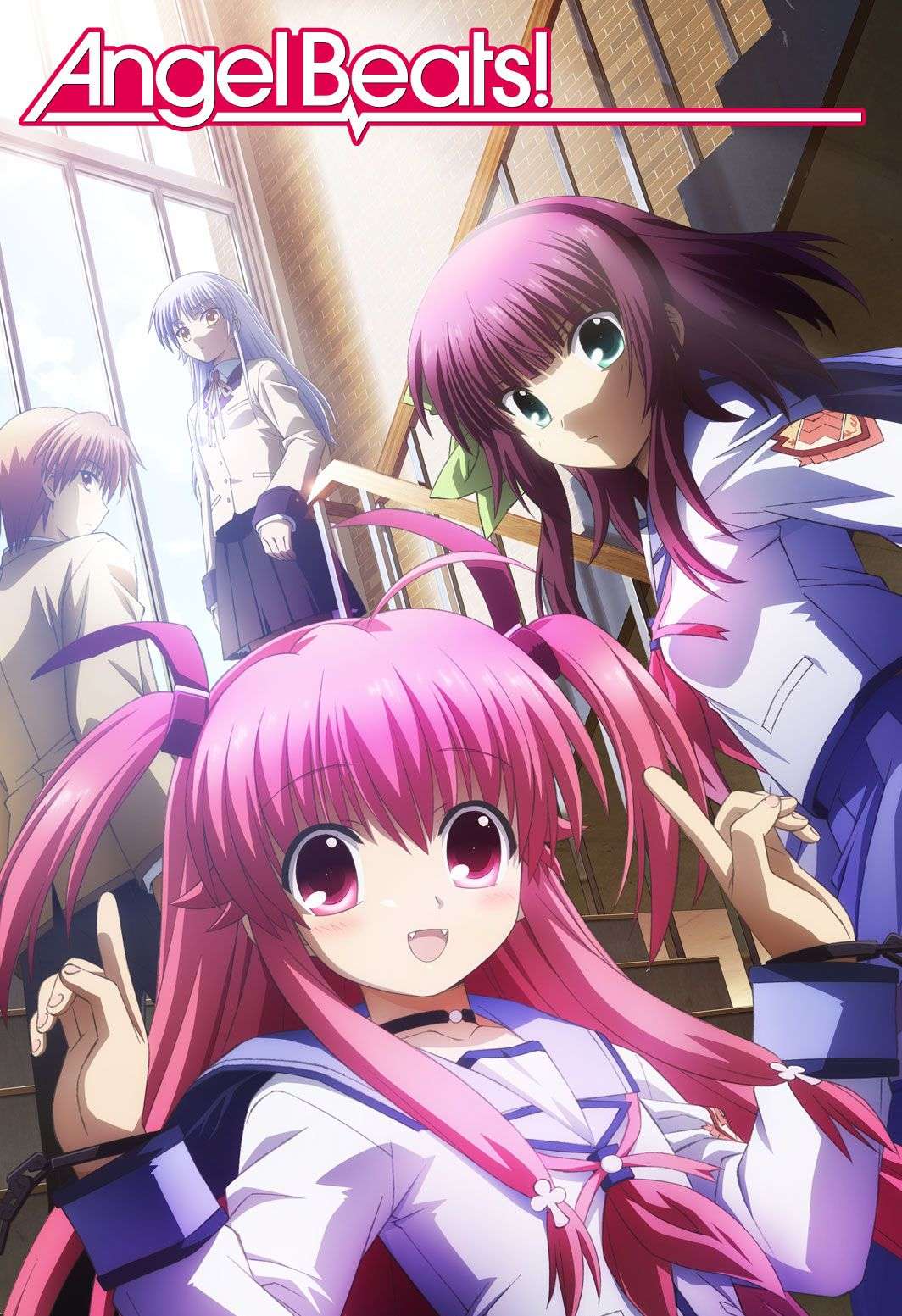
As Otonashi awakens, he learns he is dead. Yuri, the rifle-toting girl, explains that they are in the afterlife, and Otonashi realizes that his name is all he remembers about himself. He learns that Yuri is the leader of Shinda Sekai Sensen, which wages war against a girl named Tenshi. Otonashi cannot believe Yuri’s claims that Tenshi is evil so he attempts to converse with her, but things do not go as planned.
As Okonashi joins the SSS and battles Tenshi, he finds himself drawn to her oddly. While he tries to regain his memories and understand Tenshi, he gradually unravels the mysteries of the afterlife.
Angel Beats has a dualistic quality. In terms of humor, it is well-timed and mostly funny. Furthermore, it is quite good at slapstick comedy, and it is usually accompanied by unfitting music, which heightens the comedy.
Melodrama would be the other part. Most of the characters’ backstories are revealed piece by piece, and many of these stories are depressing and torturous. They are not stereotypical; a common theme seems to be regret. This is especially true for teenagers who are dealing with their families, society, and everyday life.
The characters are interesting to observe as they interact with each other and how different their personalities are. None of the characters are alike, not even in their personalities. Having so many characters in the series can make it hard for each to have a distinct personality.
Whenever they feel happy, intense, or sad, they share it with each other. Although many of these characters have horrific backstories, you could still relate to them.
Sakura-sou no Pet na Kanojo
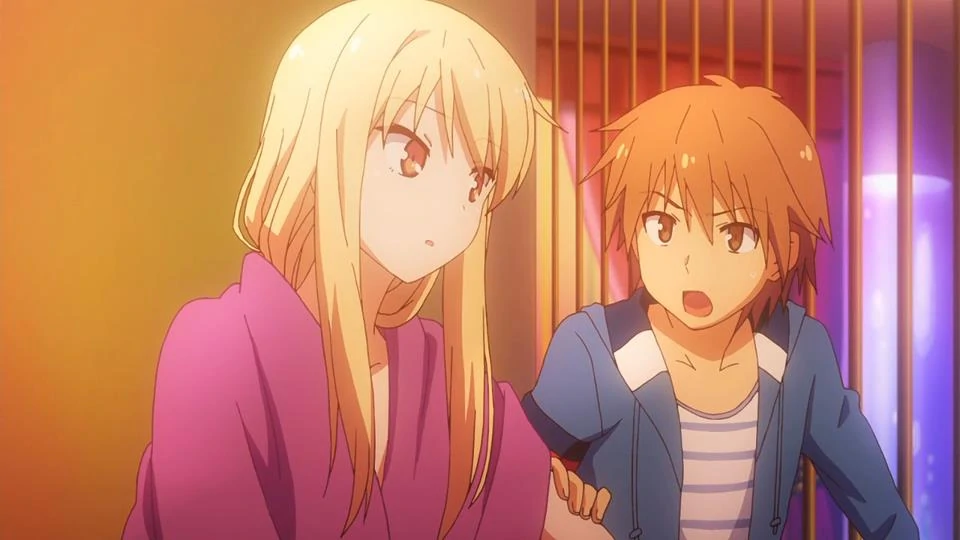
Second-year Sorata Kanda’s conscience and abandoned kittens force him into Suimei High School’s infamous Sakura Hall, the satellite dorm where the dorm’s eccentric, misfit residents turn his life upside down. In the dorm, Sorata meets Misaki, an enthusiastic animator; Jin, a playwright playboy; Ryuunosuke, a reserved programmer; and Chihiro, an art teacher, a party girl, and the dorm manager.
In order to move back into regular dorms, Sorata’s friend Nanami, a second-year student who wants to become a voice actress, pushes him to find new owners for the cats. The desire for escape from Sakura Hall is dampened, however, when Mashiro Shiina, a world-class artist with dreams of becoming a mangaka, transfers in during the spring trimester and takes a liking to him.
Sorata and Mashiro trigger a change in those around them by leveraging each other’s quirks. The ensemble cast of Sakurasou no Pet na Kanojo explores the links between talent, hard work, romance, and friendship.
Among the most important aspects of anime is its story, which Sakurasou has in abundance. A lot of depth is added to the story by Sakurasou’s characters. As well as the trials they face, the misfits have many small adventures and antics during their stay at Sakurasou. Over time, Sakurasou’s six friends’ friendships grow, bonds are strengthened, and they experience fights, love, and tears.
Throughout the story, we learn about all of their backgrounds. Even though the residents of Sakurasou come from vastly different backgrounds, they all accept one another. They are all true friends, and they have never harbored animosity or resentment for each other. Watching them is fascinating because of their chemistry.
Toradora!

Ryuuji Takasu is a kind-hearted high school student who likes housework; however, his intimidating appearance often gets him branded as a delinquent. In contrast, Taiga Aisaka is a small, doll-like student who is anything but a cute and fragile girl. “Palmtop Tiger” is Taiga’s nickname at school because of her wooden katana and feisty personality.
A mistake causes the two students to cross paths one day. Ryuuji is surprised to discover Taiga has a sweet side: she has a crush on Yuusaku Kitamura, who just happens to be his best friend. However, things only get crazier when Ryuuji reveals that he has a crush on Minori Kushieda, Taiga’s best friend.
A romantic comedy about an odd couple as they embark on a quest to help each other with their crushes, forming an unlikely alliance in the process.
The story stays away from cliches and is relatively unpredictable for a love story. This series is great because of its characters. Every character has a unique personality that is believable and realistic. There is no “super” character that acts cool or too good to attend school. Characters in this series are not annoying, snobbish, or stuck up, as tsundere characters are sometimes.
Each character has a weak side or moments of insecurity, which makes them more relatable. There are also many comedic scenes as well as emotional ones. Best of all, though, are the interactions and chemistry between all the characters, and the way each character changes as their relationship grows.
Ouran Koukou Host Club
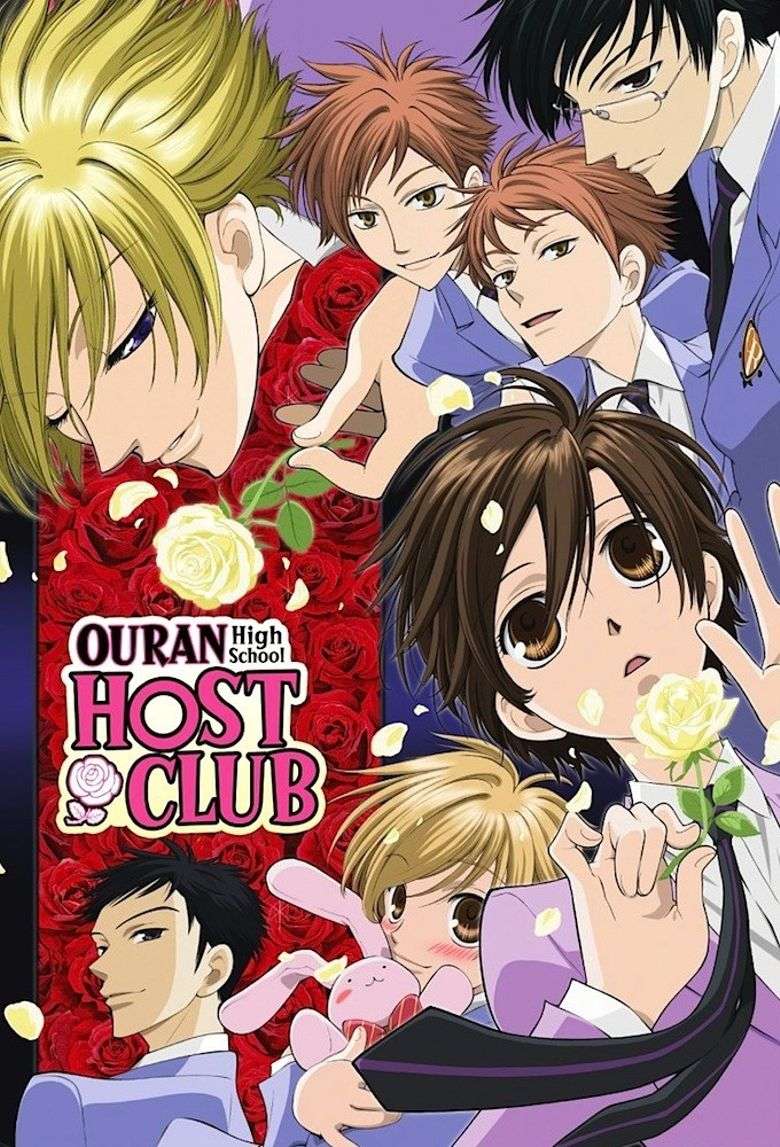
Ouran Academy is a prestigious school for students of high pedigree, yet Haruhi Fujioka is an exceptional scholarship candidate with no rank or title to speak of. As Haruhi opens the door to Music Room #3 hoping to find a quiet place to study, she discovers the Host Club.
Under the leadership of the princely Tamaki Suou, the club includes members such as the “Shadow King” Kyouya Ootori, the playful Hitachiin twins, Kaoru and Hikaru; the youthful Mitsukuni Haninozuka, also known as “Honey”; and his fierce protector Takashi “Mori” Morinozuka- is a place where handsome boys with plenty of time on their hands entertain the girls in the academy.
In an attempt to escape from the hosts, Haruhi breaks a vase worth eight million yen and must become the eccentric group’s general errand boy to repay her enormous debt.
She is soon promoted to full-time host due to her convincingly masculine appearance, naturally genial disposition, and fascinating commoner status. Soon, Haruhi is swept into a glitzy whirlwind of elaborate cosplays, rich food, and exciting shenanigans that only the wealthy Host Club can pull off.
Throughout the show, the fourth wall is rarely standing. Sometimes, this show will try to tug at your heartstrings, and it usually succeeds. The cast of this anime makes it incredibly heartwarming despite being a little corny. Even though you can easily develop a favorite host, no one on the cast is unentertaining or overstays their welcome.
You will find it funny no matter what gender you are, and it can be smart and stupid at the same time. There is enough wackiness to make you laugh out loud, but there is also enough character development to keep you interested in what is going on.
Komi-san wa, Comyushou desu.

On his first day of high school, Hitohito Tadano has a clear plan: to stay out of trouble and to do his best to blend in. Taking the seat next to Shouko Komi, the school’s madonna, he fails right away. Now, his peers regard him as someone they should eliminate if they want to sit next to the most beautiful girl in the class.
Komi is beloved by everyone and immensely popular despite her mysterious personality because of her beautiful and graceful appearance and long, dark hair. Unfortunately, she suffers from crippling anxiety and a communication disorder, which prevents her from fully socializing with her classmates.
As if in a one-way conversation, Komi is forced to interact with Tadano through writing on the blackboard when left alone in the classroom. When Tadano realizes she cannot communicate properly, he picks up the chalk and begins to write as well. Eventually, he learns that Komi’s goal for high school is to make 100 friends. In order to assist her, he also becomes her first-ever friend.
Komi-san is a series that takes its time properly building up the necessary development and progress in its story, for the characters and the series’s supposed growth. Komi-san’s premise does not present or offer up anything new to the anime franchise, the story and its characters are brilliantly blended into an awe-inspiring show with an endless charm.
Considering the number of characters in this anime, the character development is quite impressive. Almost every character is given the screen time and spotlight they deserve. The characters are really relatable too.
Cardcaptor Sakura
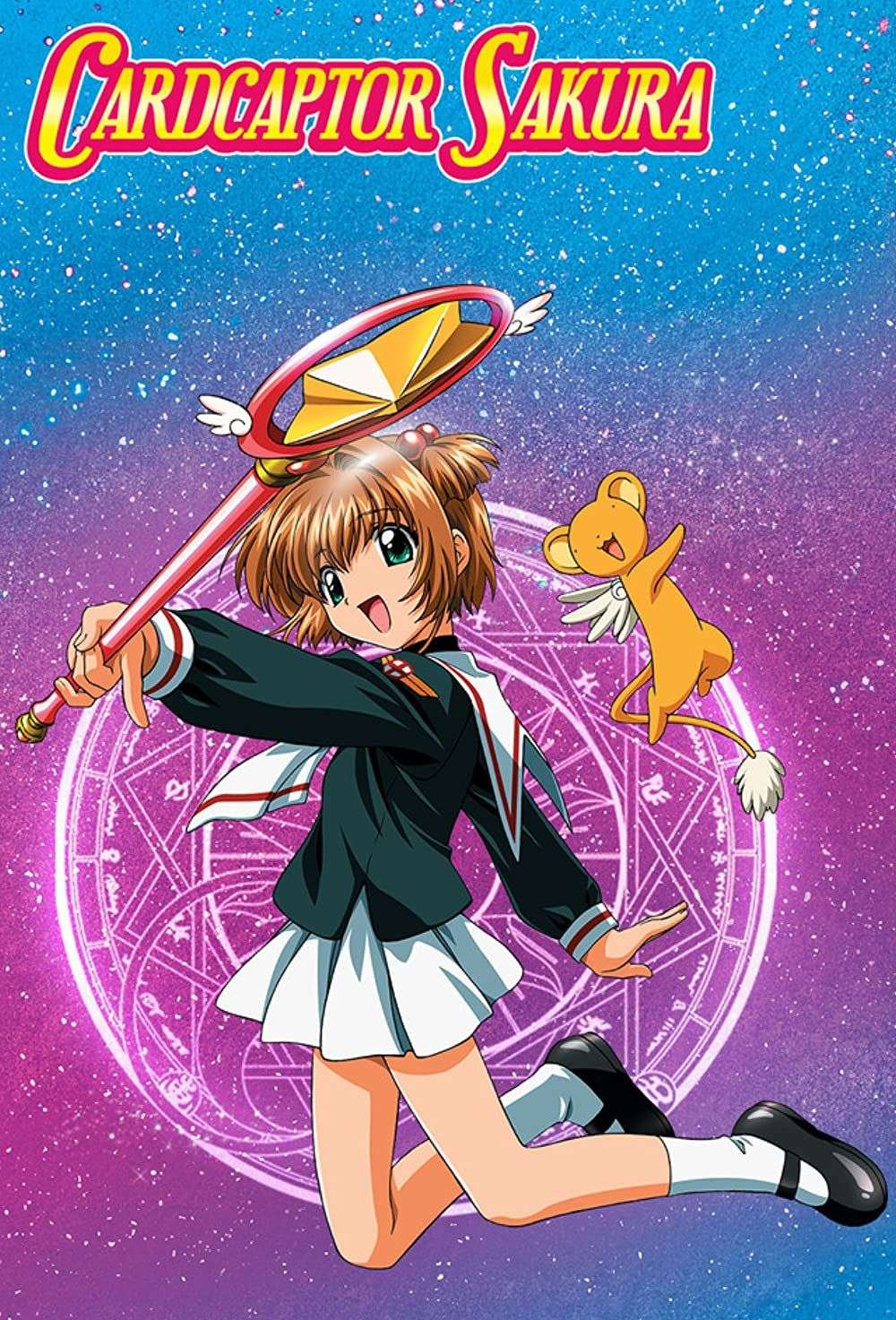
The main character, Sakura Kinomoto, is a typical ten-year-old fourth-grader who stumbles upon a mysterious book containing a set of cards one day. She has no time to figure out what the cards mean due to an accident that causes a magical wind to blow and scatter the cards throughout the world.
Awakened from the book, the Beast of the Seal, Keroberos, nicknamed Kero-chan, tells Sakura that she has released the mystical Clow Cards made by the sorcerer Clow Reed.
These are no ordinary cards. As they each possess extraordinary powers, Clow sealed the Cards together in a book to prevent them from acting independently. Now that the Cards have been set free, they pose a serious threat to the world, and Sakura must stop them from causing a catastrophe.
After bestowing Sakura the title of “the Cardcaptor” and giving her the Sealed Key, Keroberos assigns her the task of finding and recapturing all the Cards. Sakura must balance her new secret duty with the everyday worries of a young girl involving love, family, and school as well as her magical adventures as Sakura the Cardcaptor. She enlists the help of her best friend Tomoyo Daidouji and Kero-chan.
The majority of the entertainment comes from Sakura’s interactions with the characters, particularly with her guardian Keroberos and her closest friend Tomoyo, who often accompanies her to the scene of each card to record footage on her camcorder.
Cardcaptor Sakura breathes new life into an anime genre where conventions and inspirations rule the day. The timeless classic has become one of the most influential and high-quality anime shows in recent memory.
This is a consistently high-quality, entertaining, and occasionally thought-provoking anime that deserves its acclaim and influence. A title like this illustrates the connection between quality storytelling and creativity.
Youkoso Jitsuryoku Shijou Shugi no Kyoushitsu e
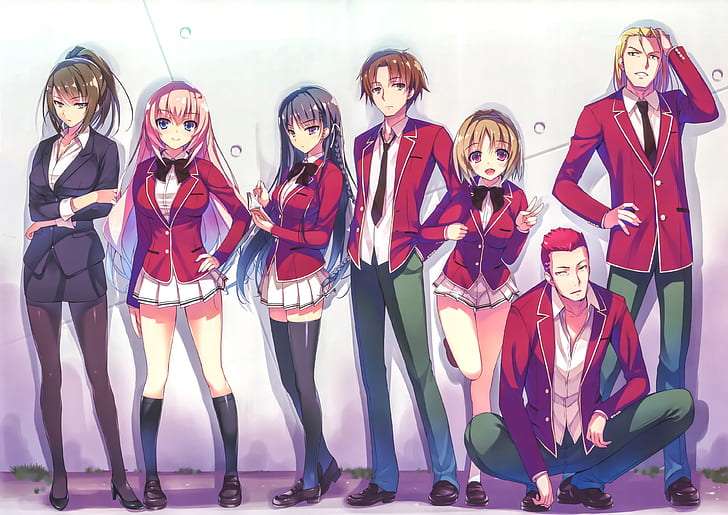
Koudo Ikusei Senior High School seems like a utopia from the outside. Students enjoy an unmatched amount of freedom, and it is ranked highly in Japan. Unfortunately, the reality is less than ideal. In order of merit, four classes, A through D are ranked, and only the top classes receive favorable treatment.
School’s worst students attend Class D, where Kiyotaka Ayanokouji studies. He meets the unsociable Suzune Horikita, who firmly believes that she was placed in Class D by mistake and has aspirations to rise all the way to Class A, and the seemingly amicable class idol Kikyou Kushida, who is seeking to make as many friends as possible.
Although class membership is permanent, class rankings are not; students in lower ranked classes can rise in rankings if they outperform those in the top-ranked classes. Moreover, there is no limit to the methods that can be used in Class D in order to advance. In this cutthroat school, can they succeed against all odds?
With Youkoso, the viewer is left wondering why each character acts the way they do. In this high school, everyone is boring, right? Over half of the characters wear masks to hide their true identities.
Actions and clues take the viewer on an engaging journey as pieces are put together in such a way that learning more and more about the main character and his classmates has a lasting impact. The series becomes more fascinating and understandable as more information is revealed to the viewer about the characters.
You will most likely enjoy this anime if you are capable of thinking for yourself and wondering what each character’s true personality is.
Kill la Kill

Since her father was murdered, Ryuuko Matoi has wandered the land looking for his killer. Her sole lead, the missing half of his invention, the Scissor Blade, leads her to Honnouji Academy, a high school unlike any other.
In the academy, Satsuki Kiryuuin, the imposing and cold-hearted student council president, rules with her powerful underlings, the Elite Four. In the brutally competitive school hierarchy, Satsuki bestows upon those at the top special clothes called “Goku Uniforms,” which grant their wearers superhuman powers.
After being severely beaten by one of the uniformed students, Ryuuko escapes to her razed home where she discovers Senketsu, a rare and sentient “Kamui,” or God Clothes.
The moment Senketsu comes into contact with Ryuuko’s blood, he awakens, latching onto her and giving her immense power. With the help of Senketsu and the Scissor Blade, Ryuuko takes on the Elite Four, as she hopes to find out the truth behind the death of her father once and for all.
In order to deliver something fresh and exciting, Kill la Kill amplifies and inverts anime clichés. Even though Ryuuko’s revenge story is predictable, the way it is executed makes it unique.
The school setting, the characters, and the action in this story are all exaggerated. Every episode is filled with high-octane action, never lingering on any one particular event for too long. Despite its short duration, the show plays with viewers’ expectations by completely changing the outcome.
Similar to the explosive theatrics that is displayed all over the screen, the characters are outstanding in their ability to inject themselves into the plot and show.
Boku no Hero Academia

Newly discovered superpowers referred to as quirks have steadily increased over the last few years, with 80 percent of humans possessing various abilities from manipulating elements to shapeshifting. The rest of the world is rendered powerless, and Izuku Midoriya is one such individual.
The ambitious middle schooler has always wished to be a hero since he was a child. Because of his unfair fate, Izuku admires heroes and takes notes on them whenever he can. Izuku’s persistence appears to have paid off: he meets All Might, the number one hero and his personal idol. The quirk of All Might is an ability that can be inherited, so he chose Izuku to be his successor!
Izuku undergoes a rigorous training program before enrolling in UA High, which is renowned for its excellent hero training program, and this year’s freshmen seem particularly impressive. Izuku will soon discover what it truly means to be a hero from his bizarre but talented classmates and the looming threat from a villainous organization.
The main focus of Boku no Hero Academia is Izuku, a young boy who aspires to become the greatest hero in a world filled with heroes. Considering that almost every human being in the world has a quirk that gives them a distinct advantage over Izuku, who was born without one, this is no menial task.
In spite of the fact that the story has been told countless times before, this show manages to make it distinctive. In addition to grabbing your full attention, the show will immerse you in the world it was meant to portray. With the protagonist’s die-hard attitude, you will grow very fond of him by the end of the series.
All the characters have different personalities, quirks, and traits that make them unique.
Toki wo Kakeru Shoujo

Despite being in her last year of high school, Makoto Konno is having difficulty deciding what she wants to do with her life. Makoto’s life abruptly changes when she accidentally discovers that she can literally jump through time, on top of dealing with the stress of her teachers and enjoying time with her best friends.
Makoto’s newfound powers are explored in Toki Wo Kakeru Shoujo. It soon becomes apparent to her, however, that every choice has consequences, and time is more complicated than it seems.
A seemingly insignificant and puerile act can have grave consequences, as such actions are often based on ignorance or selfishness, both of which are traits that rarely produce a positive result if taken into consideration. We watch as our heroine learns this the hard way, as she sees how fateful her seemingly insignificant acts are, and how wrong she is in her childish beliefs.
The only thing she wants is to keep the fun times going, with her and her two best friends. She wants time to stop so she can stay in the moment. Time, however, is inexorable; the future is relentlessly closing in on us. She must learn this the hard way. Nevertheless, she learns. She learns that the future cannot be avoided through hardships. Instead, it is something to cherish and embrace.
It is a beautiful movie, good for many things, but especially for its underlying theme about looking forward to the future and accepting that the present will change, and the simple message that every action has a consequence; especially childish and ignorant ones.
Yahari Ore no Seishun Love Comedy wa Machigatteiru.
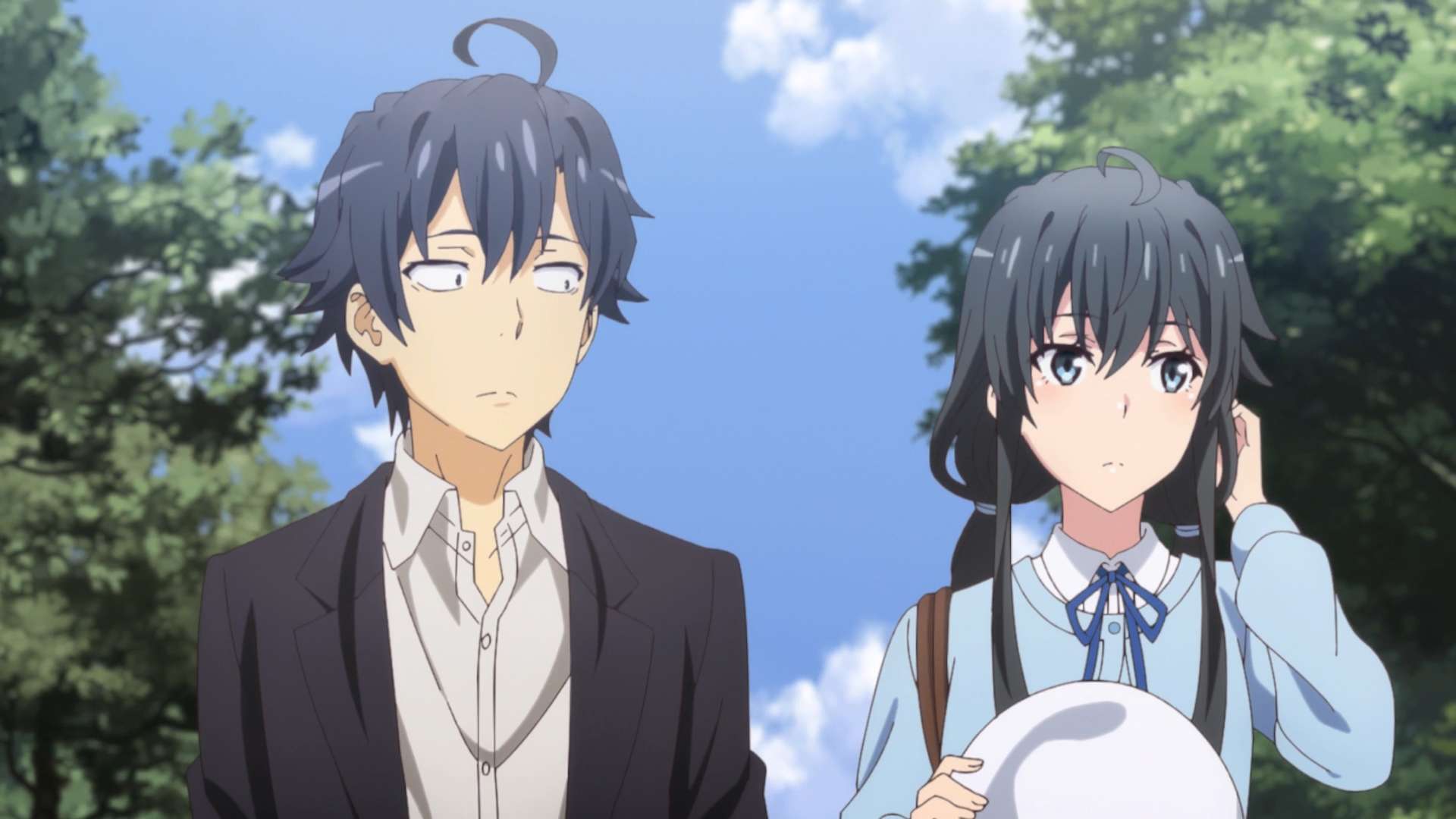
Apathetic high school student, Hachiman Hikigaya has narcissistic and semi-nihilistic tendencies. In his opinion, joyful youth is nothing but a farce, and anyone who says otherwise is just lying to themselves.
As punishment for writing an essay mocking modern social relationships, Hachiman’s teacher makes him join the Volunteer Service Club, which extends a helping hand to any student who asks for help in reaching their goals.
Having only one other member in their club, ice queen Yukino Yukinoshita, Hachiman finds himself dealing with other people’s problems—something he could never have imagined. Hachiman’s rotten view of society may be a hindrance, but it might also be a resource he can use to solve many students’ problems as he and Yukino use their wits to solve many students’ problems?
Although Yahari Ore isn’t the first anime to tackle the anti-social protagonist, it captures it perfectly with its characters and deadpan writing. Despite the fact that this seems like a typical rom-com, you’ll be shocked by the harsh views of our characters. However, this is what makes this anime stand out from the rest. This anime is charming, funny, and realistic at the same time.
This gives us a glimpse of those in school who have been rejected so much that they create their own rules, which, of course, excludes everyone else. When all you have to rely on is yourself, it’s much easier to get by. His biting sense of humor and harsh view of the world are what make this show so funny.
Clannad
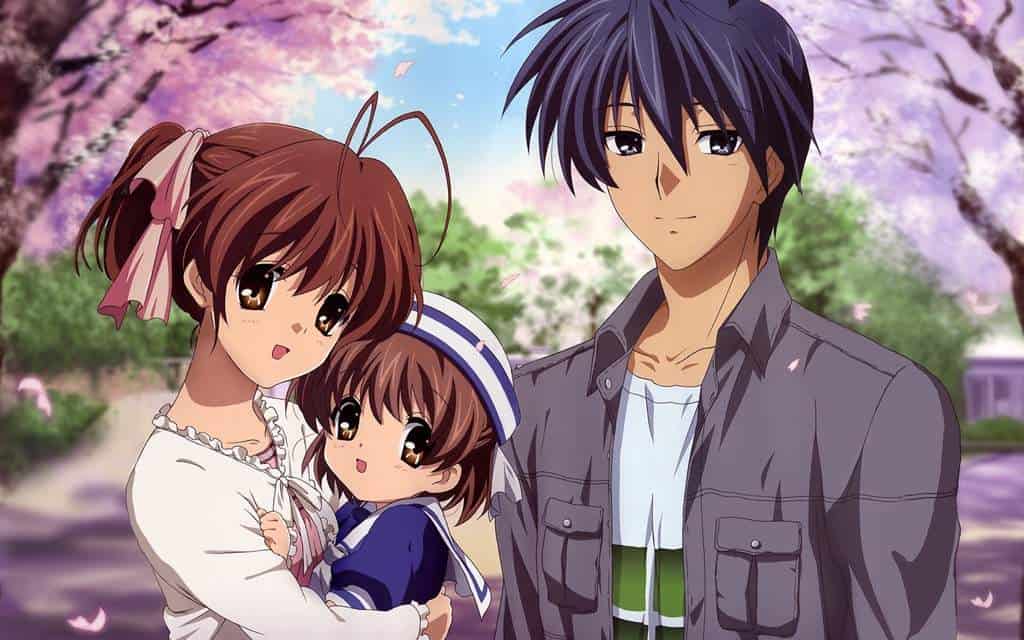
Delinquent Tomoya Okazaki believes that he’ll never achieve anything in life. During his high school years, he skips school with his buddy Youhei Sunohara.
While walking to school one day, Tomoya passes a girl who is muttering quietly to herself. She exclaims “Anpan!” without warning, a popular Japanese food that catches Tomoya’s attention. The boy soon discovers the girl’s name is Nagisa Furukawa and that she exclaims things she likes to motivate herself. Nagisa tells Tomoya they have become friends, but he walks away disregarding the encounter.
Tomoya, however, notices Nagisa more and more at school. He eventually befriends her. Nagisa tells Tomoya she lost a year to a severe illness and wants to revive the drama club at school. With the help of four other girls, he decides to help her achieve this goal, claiming he has nothing else to do.
The more time Tomoya spends with the girls, the more he learns about them and their problems. He learns that life isn’t as dull as he once thought as he tries to help each girl overcome her particular obstacle.
Once the characters are introduced, Clannad does an amazing job with them. Apart from their struggles being depicted in a gripping, compelling manner, we also see them becoming strong people who stand by their friends and who are capable of facing the world and its challenges with greater openness.
The drama club may just act as a family for the main characters of the show. Clannad has a variety of unique characters, at least one of which will capture a fan’s attention.
Kaichou wa Maid-sama!
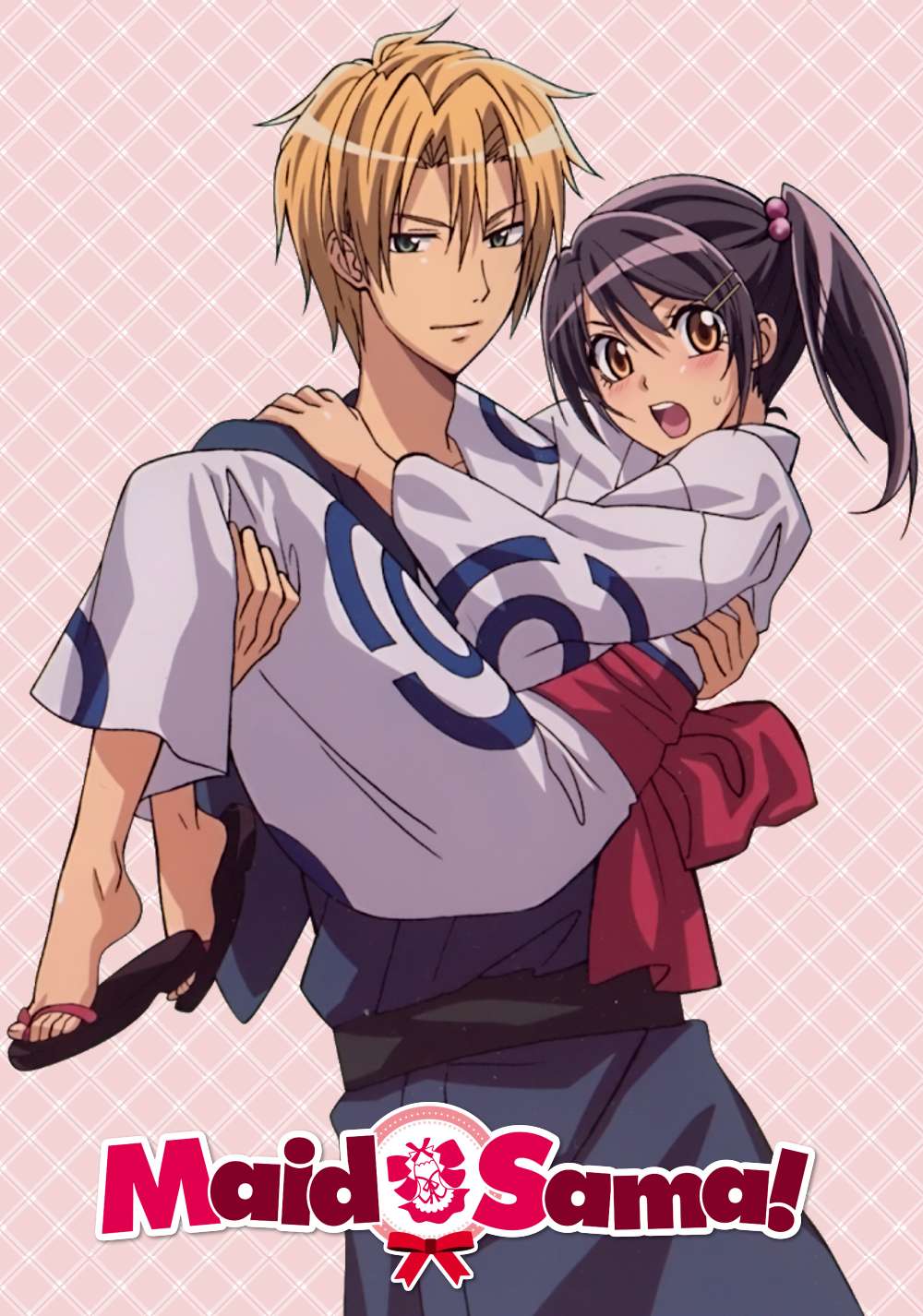
It isn’t easy to be the first female student council president, especially when your school has just switched from an all-boys high school to a co-ed one. Known as “Demon President” by the boys for her strict disciplinary style, Misaki Ayuzawa does not hesitate to use her mastery of Aikido techniques to deal with misbehaving boys at Seika High School and defend the girls.
Ayuzawa, despite her perfect reputation, has a dark secret–she works part-time at a maid café to pay the bills for her struggling family.
Keeping her job hidden from her fellow students and maintaining a flawless image as a stellar student, she kept it that way until Takumi Usui, the most popular boy in school, walked into the maid café one day. Using her secret to damage her reputation is one option, but he could also use it to gain closer relationships with her.
Maid Sama does diverge from the conventional plotline, even though it may not appear like the most original series. It does not stick to the cliche of either the ultra-cool bishounen or the super-strong bishoujo being the best. Both Usui and Misaki are quite equal.
The kind of girlfriend you’d want to hang out with and count on, Misaki is great. It’s because she’s a character you can admire, relate to, and empathize with that makes the series so compelling to watch.
Maid Sama also provides some good humor. The humor is primarily from the gender relation jokes, and it’s also quite enjoyable how Usui’s character undercuts the bishounen stereotype – while he might be a bishounen, he’s also extremely bizarre and can say or do the most bizarre things in the calmest way.
Kimi ni Todoke

Due to her resemblance to the Sadako character from The Ring series, Sawako Kuronuma is nicknamed “Sadako” and misunderstood as frightening and malicious like her fictional counterpart, despite having a timid and sweet nature.
Sawako, who longs to make friends and live a normal life, is drawn to Shouta Kazehaya, her most popular classmate because he is cheerful and friendly. Sawako admires Kazehaya’s ability to be the center of attention and aspires to be like him since their first meeting.
Sawako sees the opportunity to get along with her classmates presented by Kazehaya’s initiative to conduct a test of courage for the whole class, starting with Ayane Yano and Chizuru Yoshida, when she agrees to participate. Upon meeting Kazehaya, Sawako believes she has been changed for the better through each encounter and emotion she experiences. Sawako is unaware that Kazehaya has been changed by her presence as well.
Rarely does a series break the mold its genre has cast for it and even more rarely does it stand out from all the others? This is the case with Kimi ni Todoke. It flips all the classic shoujo romance stereotypes and plot devices on their heads, leaving us with an enjoyable, groundbreaking romance.
We are presented with real and powerful feelings and situations, but not in an overly dramatic way. There are no torturous family lives, tragic pasts, or other situations that are built to create drama when great characters and storytelling could actually achieve the same results.
Despite the fact that Kazehaya and Sawako appear to be completely different, they share the same confusing emotions and fears about their feelings for one another.
Blue Period
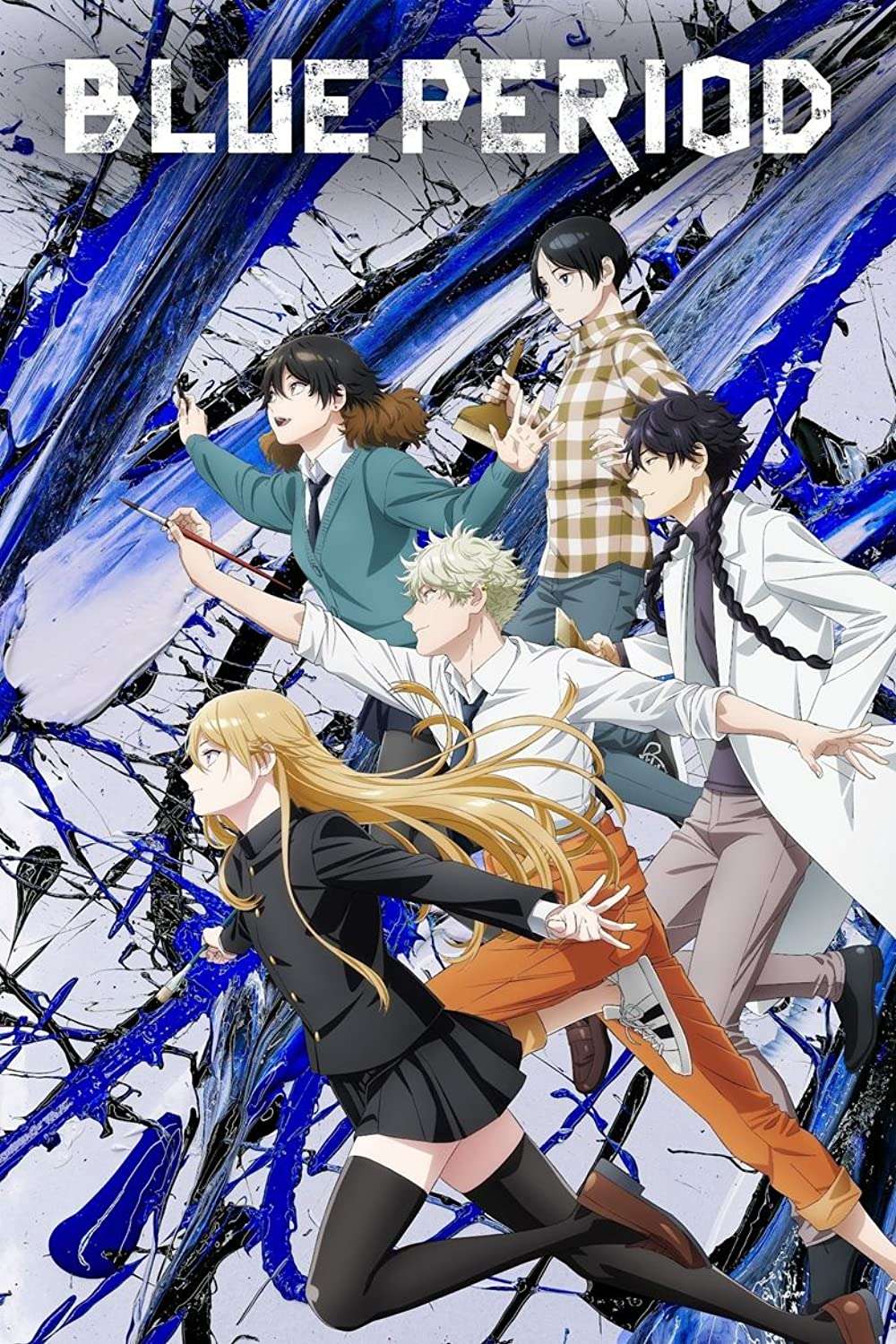
Yatora Yaguchi is a delinquent student in his second year of high school, who gets good grades but has no drive to discover his true path. Although Yatora hangs out with similarly unambitious friends, he works hard to keep his academic standing. Although Yatora appears carefree and enjoys both activities, he wishes he could find something more fulfilling.
As Yatora mulls over his predicament, he finds himself staring out at a vibrant Shibuya landscape. His thoughts about the extraordinary sight cannot be expressed in words, so he picks up a paintbrush, hoping they will be reflected on a canvas. Having been praised for his work, he is sent on a journey to enter the highly competitive Tokyo University of the Arts, a school that only accepts one of every 200 applicants.
Amidst talented peers, a lack of understanding of the fine arts, and concerns over obtaining his parents’ approval, Yatora faces many obstacles. Yatora needs to demonstrate that his inexperience does not define him in order to secure one of the five prestigious spots in his program of choice.
Characters are lovable and the protagonist is one of the most relatable among shounen protagonists. The way he interacts with the other side characters is really heartwarming and relatable.
Everyone wonders which path to follow to be successful, should one follow the path of money or passion? Despite the fact that this ideology has been revolving for many years, it still motivates an individual. Yaguchi’s everyday struggle to improve himself, learning from his environment, and competing with his peers in a subtle manner make him a great protagonist.
Gakuen Babysitters
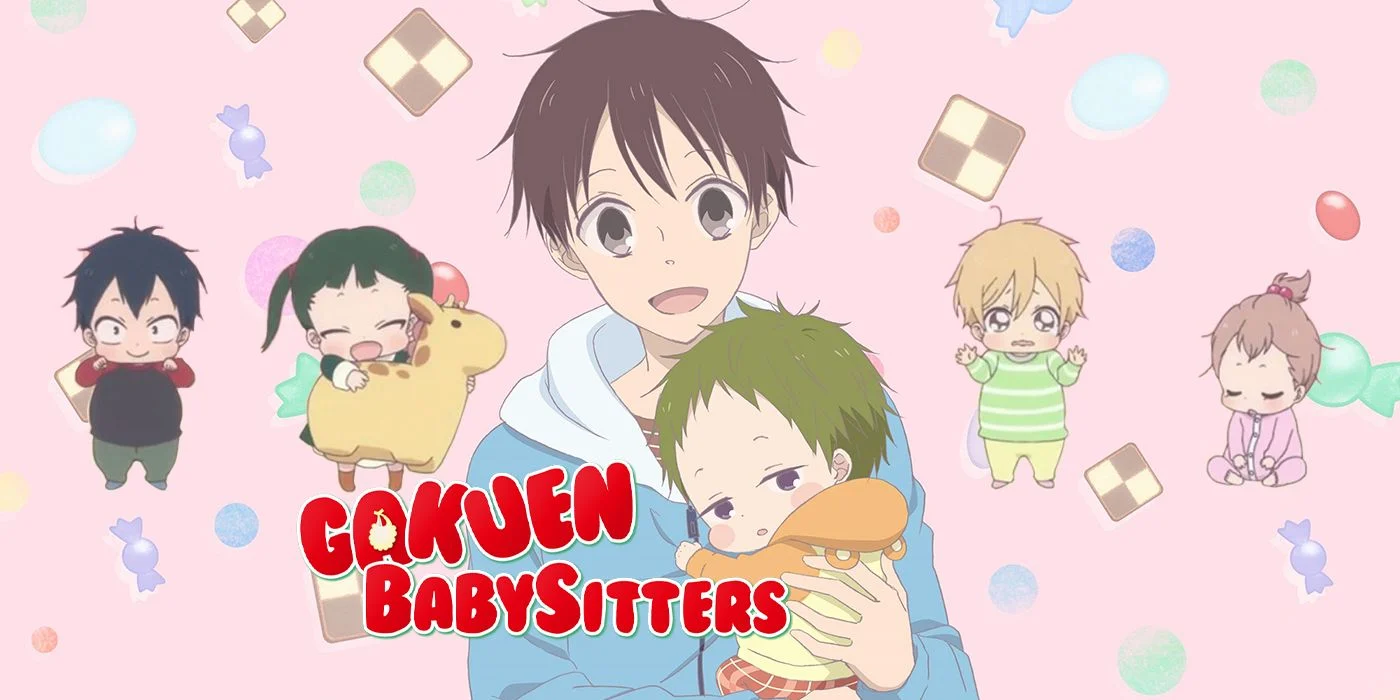
The teenager Ryuuichi Kashima must adjust to living as the guardian of his younger brother Kotarou after losing both parents in a plane crash. Though Ryuuichi can maintain a friendly and kind demeanor, Kotarou is a reserved toddler still too young to comprehend what is going on. The siblings are approached by Youko Morinomiya, the stern chairman of an elite academy, at the funeral of their parents, who takes them under her wing.
As a condition for housing and enrollment at the school, Ryuuichi must become the school’s babysitter. A babysitter’s club was organized at the academy to support the female teachers’ children; unfortunately, the club is severely short-staffed, so Ryuuichi now has to take care of not only his little brother but also a few toddlers with dynamic personalities.
You can’t go wrong with Gakuen Babysitters. It is neither thought-provoking nor action-packed. This anime fulfills its goal, which is to be a relaxing and sweet anime about families and children, or what remains of them in some cases.
It also introduces some great characters. Of course, we get to meet the kids in the Club, but we also get to meet the person responsible for the club when Ryuuichi is in class. We also get to meet Ryuuichi’s classmates and parents of the kids as well.
In this series, the story and character development are really well done. At times you find yourself holding back tears, and other times you find yourself rooting for certain characters to come over their fear of doing something, for example just playing with the children.
Non Non Biyori

While Asahigaoka might seem like typical, boring countryside to most, there is never a dull moment thanks to the five students of varying ages occupying the only class in the town’s only school. Renge Miyauchi, a first-grader who brings unabashed wit, curiosity, and her characteristic catchphrase, “Nyanpasu!” to class, is the youngest participant.
Also, there are the Koshigaya siblings, consisting of the calm Suguru, ninth grader and elder brother, diminutive Komari, eighth-grader, and mischievous Natsumi, seventh-grader. A recent arrival from Tokyo, fifth-grader Hotaru Ichijou, who appears overdeveloped for her age and therefore naturally demonstrates a sense of maturity, completes this lively and vibrant group of five classmates.
Through Non Non Biyori, a group of friends chronicles their wacky daily lives, engaging in their own brand of fun and frolic, and dealing with the reality of rural life.
Put this anime on and sit down in front of the screen, and all your concerns will disappear – probably in seconds. Each detail has been carefully considered to achieve this effect. It’s a good one too.
The story is simple. It follows four girls living in the same village, who attend the same school and live in rural village. Throughout the story, everything is based on their everyday lives, with events that are both realistic and believable.
Despite its episodic nature, the characters and settings are gradually developed over time so that there is never a lack of progress. There are one or two stories in every episode that are delightful to watch and will melt your heart. Rather than making you laugh out loud, the humor is lighthearted in tone and is intended to enhance this heart-melting effect.
Kono Oto Tomare!

Koto maker Gen Kudou believes that his delinquent grandson Chika will never understand the profundity of the traditional musical instrument. Chika joins the Tokise High School Koto Club as an attempt to make up for his naivety and understand the words of his grandfather, who passed away.
Despite the club’s dire need for members, new club president Takezou Kurata is unwilling to accept Chika’s application because of his bad reputation. Nevertheless, after seeing Chika’s seriousness and enthusiasm, Takezou allows the problem child entry, along with Satowa Houzuki and three of Chika’s friends. In this musical drama, a merry band of musicians aspires to compete at a national competition.
The viewer becomes more invested in the story as a result of their interactions and struggles. By making each character interesting, they make the viewer care about them.
In the story, each character from the club, and even from rival schools, gets some time dedicated to fleshing them out, whether it be through providing backstories for them or making them deal with conflicts in the present day.
Through these conflicts, the characters in the club are able to create stronger bonds. Each character feels very different from the others, so it is possible to relate to at least one of them throughout the story. The romance elements also play a big role in the story and, they do not come off as forced, rather they flow quite nicely with the tone. You really root for the characters to get together.
Beasters
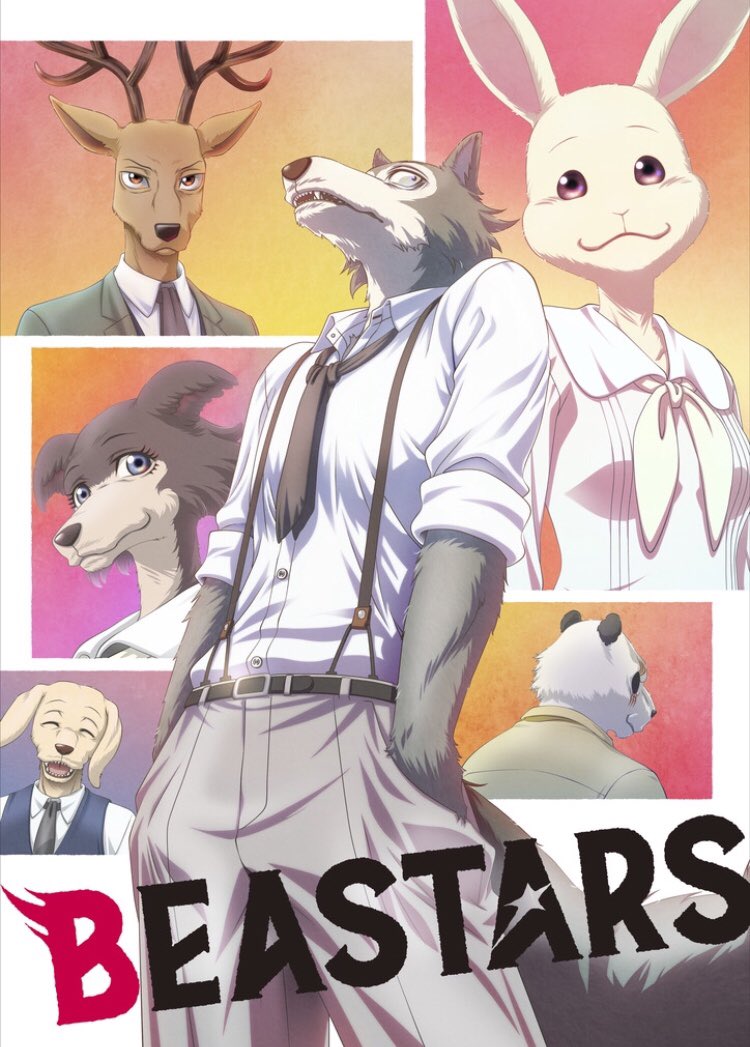
An uneasy tension exists between carnivores and herbivores in a civilized society of anthropomorphic animals. At Cherryton Academy, this mutual distrust peaks after Tem, an alpaca in the school’s drama club, is killed during a predation incident.
Legoshi, a gray wolf in Tem’s crew, has been an object of fear and suspicion all his life. Following the tragedy, he continues to lay low and hide his menacing traits, much to the displeasure of Louis, a red deer, and the domineering star actor.
Legoshi is assigned to lookout duty when Louis sneaks into the auditorium to train Tem’s replacement for an upcoming play. Legoshi meets Haru that night, a white dwarf rabbit despised by her peers. The growing feelings he has for Haru, coupled with his predatory instincts, force him to face his own true nature, the circumstances surrounding the death of his friend, and the undercurrent of violence in the world around him.
Each character has a complex and shallow side, their inner and outer personality, the one that they are and the one that they show others. There is a clear portrayal of each person’s self-image, a basic understanding of what they look like from the outside, even an inner monologue filled with reflections, and the list goes on.
Character-centric, but with philosophical undertones, the presentation has a strong psychological focus. There is more detail, planning, and polish than one would expect, let alone see, at first glance. A thought or behavior does not seem out of place or controlled by the author behind the 4th wall at any point in the narrative.
K-On!

A new high school year means many things, and one of them is joining a club. Yui Hirasawa is unsure of which club to join and stumbles upon the Light Music Club, which she misinterprets to be about playing simple instruments, like castanets. As she cannot play an instrument, she decides to visit to apologize and quit.
As a result of a lack of members, the Light Music Club is facing disbandment. To convince Yui to join, the club members offer anything, from food to slacking off during club time. Despite their efforts, Yui insists on leaving as she lacks musical experience. They play one piece for Yui as a last resort, which ignites her passion and convinces her to join the club.
Afterward, it’s just a matter of messing around with bits and pieces of practice. The Light Music Club members are looking forward to a delightful time together!
Each episode begins with a character introduction, and they entertain you with nothing but their own personalities and imaginations. In contrast to a villain who pulls all the strings, each character drives the story forward in their own way.
There are many occasions in which each member of the main cast demonstrates their unique personality traits. Everyone has their own struggles and joys. When they are together, they fit well together, and their interactions are very entertaining. To put it simply, the characters are extremely polished, consistent, and enjoyable to watch and listen to.
It’s a fun anime that will make you laugh with the characters’ interactions and jokes with music and behavior. When combined with a great soundtrack and very good animation, we have a fun anime to watch.
Gekkan Shoujo Nozaki-kun
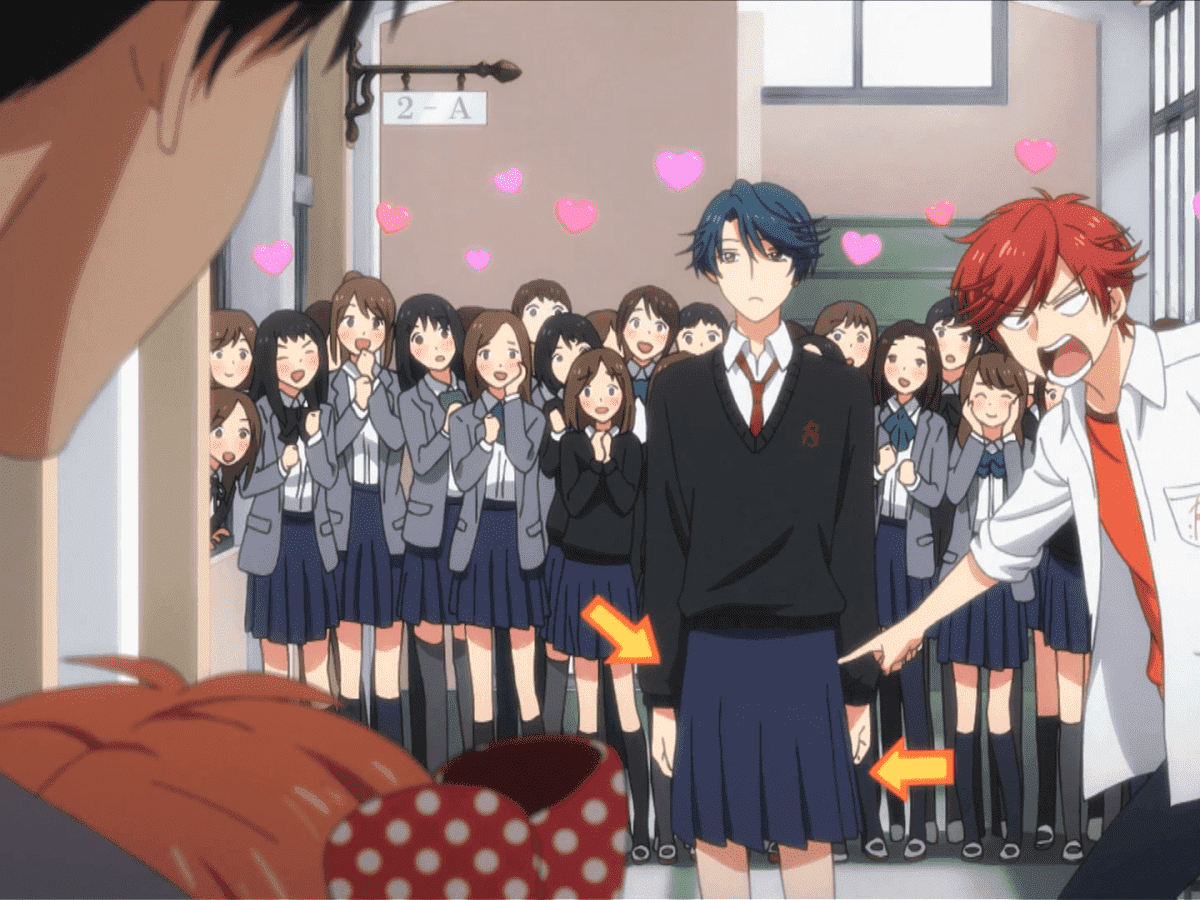
Chiyo Sakura is a cheerful high school student who has fallen head over heels for Umetarou Nozaki despite his obliviousness. When Chiyo confesses to Nozaki about her feelings for him, he gives her an unknown autograph, much to her confusion. It turns out the stoic teenager is actually a shoujo mangaka, writing under the pen name Sakiko Yumeno! Due to misunderstandings, Chiyo becomes one of Nozaki’s manga assistants.
It is during these hilarious episodes that she becomes friends with several quirky schoolmates, such as Mikoto Mikoshiba, a seemingly shameless fellow assistant, and Yuu Kashima, the “Prince of the School.” Chiyo strives to help Nozaki with his manga in Gekkan Shoujo Nozaki-Kun, hoping that he will realize her feelings toward him.
Characters are the most interesting aspect of the show and each one is unique in their own way. Having so many characters on the show creates hilarious situations that make the show stand out and take comedy to a whole new level.
You have Sakura, a girl who always tries to get close to her crush, but is always misunderstood. With her delusions and retorts, she makes the show better with her remarks. She thinks something is going to happen, but the exact opposite occurs. Eventually, she develops a bond with Nozaki and creates a friendship that makes you smile at every scene.
Secondly, there is Nozaki, a manga artist who is often misunderstood. As he stays up to draw and produce manga, he looks like he gets into fights, but really it’s just aches and pains from the continuous drawing and late nights. He seems to be oblivious to Sakura’s feelings and has some hilarious responses to what he believes she’s doing.
ReLIFE
After quitting his first job, 27-year-old Arata Kaizaki bounces from one job to another after being branded a hopeless loser by those around him. Arata’s unremarkable existence abruptly changes when he meets Ryou Yoake, a member of the ReLife Research Institute, who offers him the opportunity to change his life with the help of a mysterious pill. Immediately upon awakening the following morning, Arata finds that his appearance has reverted back to that of a 17-year-old.
Arata soon discovers that he is a part of an experiment and must attend high school as a transfer student for one year. He believes it will be easy because of his superior life experience, but Arata’s first day proves him wrong: he flunks all his tests, is out of shape, and cannot keep up with the new policies that have been implemented in the last decade.
In addition, Ryou is assigned to observe him, causing endless irritation to Arata. Arata struggles to adjust to his hectic new lifestyle and avoid repeating his past mistakes while learning more about his classmates.
Conflict is all around you, but you know where it comes from and want to know how it is resolved. It’s all well connected among the episodes and makes you want to watch it all at once as soon as you get the chance.
The characters in a story that are universally adored by their audience take something special to create. Characters are at the center of ReLIFE in the hope that their dialogue and individual characteristics will engage us and make the experience memorable.
Suzumiya Haruhi no Yuuutsu
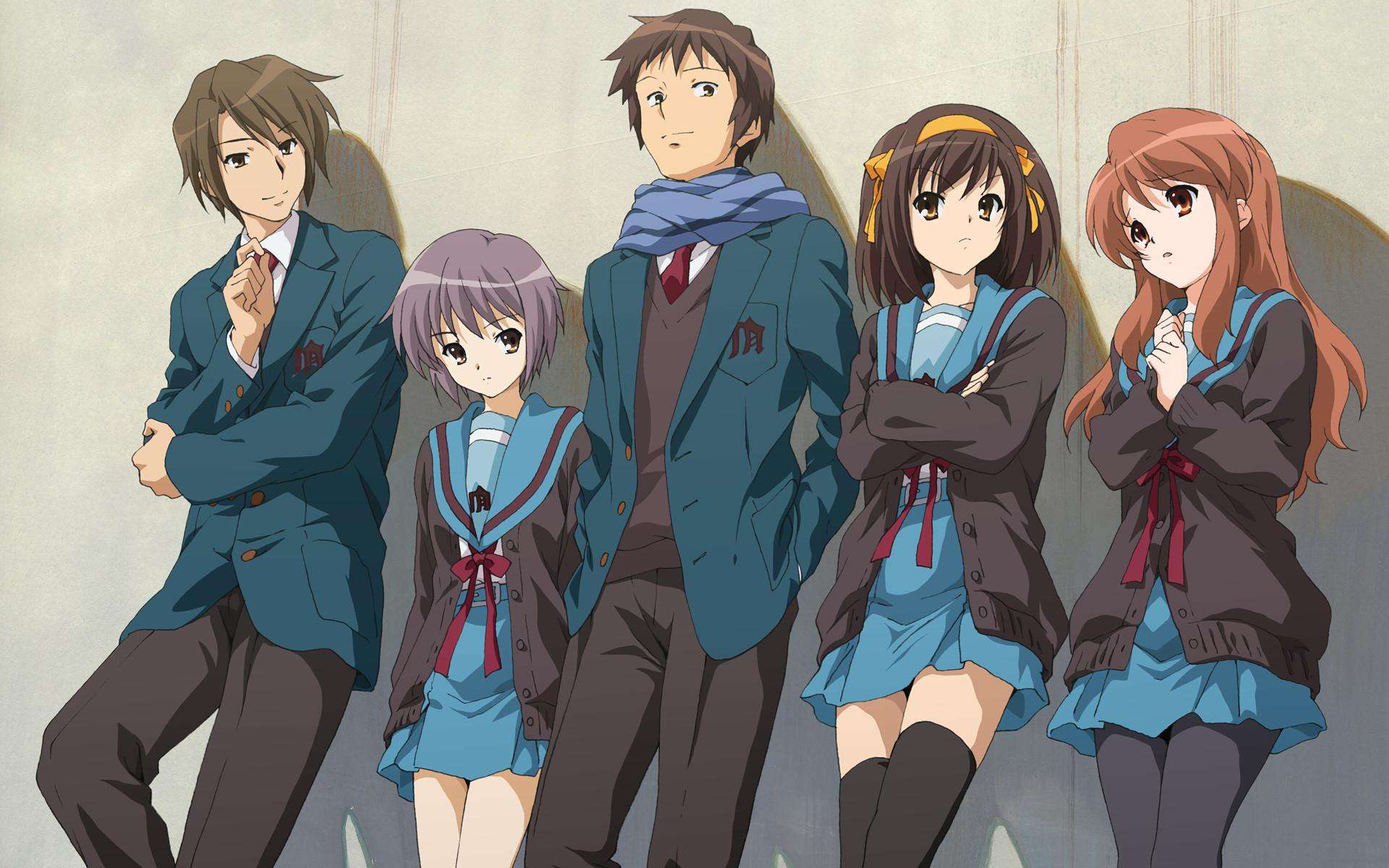
As a typical high school student, Kyon has long abandoned his belief in the supernatural. Upon meeting Haruhi Suzumiya, however, he quickly finds out that she is interested in the supernatural – aliens, time travelers, and espers among others. Kyon encourages Haruhi to create a club after she laments the lack of intriguing clubs around the school. Thus, the SOS Brigade is formed, a club that specializes in all things supernatural.
Kyon is recruited, along with silent bookworm, Yuki Nagato, shy and timid Mikuru Asahina, and always smiling Itsuki Koizumi. Under their whimsical leader Haruhi, these four go on a series of wild adventures.
Suzumiya brings new light and brilliance to something we didn’t know could exist. It brings pure genius comedy and an excellent array of characters to keep you hooked.
This show is best known for its very unique cast of characters. It is really very rare to be able to like all the characters. Each one of the main characters is so likable it’s hard to pick a favorite, and even minor supporting characters are alive with hilarious personalities – many supporting characters could probably star in their own series. Each character appeals to you in its own way. But the biggest factor is the subtle change and growth of the characters.
This is a show that you’ll have to watch over and over in the wrong and right order to fully enjoy it. There’s plenty of comedy to enjoy nevertheless, there are also some spectacular action sequences.
Azumanga Daioh

A 10-year-old academic prodigy who likes to eat homemade food and play with plush dolls, Chiyo Mihama begins her high school career as the oddest student in her class. Yukari Tanizaki, her homeroom teacher, will steal a student’s bike in order to avoid being late, so “strange” is relative.
Yukari-sensei’s homeroom class is certainly not short on peculiar girls. Chiyo is accompanied by students like Tomo Takino, a tomboy with more enthusiasm than brains; Koyomi Mizuhara, Tomo’s best friend whose temper is shorter than Chiyo; and Sakaki, a tall, athletic beauty with a pained obsession with cats.
In addition, transfer student Ayumu Kasuga has a few interesting theories about Chiyo’s pigtails, and she fits right in with the other girls.
With constant laughter, surreal absurdity, and touching commentary on the bittersweet, temporal nature of the high school, this group of lovable girls navigates the ups and downs of high school life.
It’s a slice-of-life anime, which means there is typically no story. Instead, there are plenty of skits. Several hilariously over-the-top skits. It can be completely realistic or mind-blowingly over the top. What makes this show shine is its characters. All the characters in this show are very likable.
It is a show you will watch over and over again and still laugh! Every joke is well thought out and hilarious. The characters will make you laugh even when they are just standing around, not talking, and staring at each other.
Kakegurui
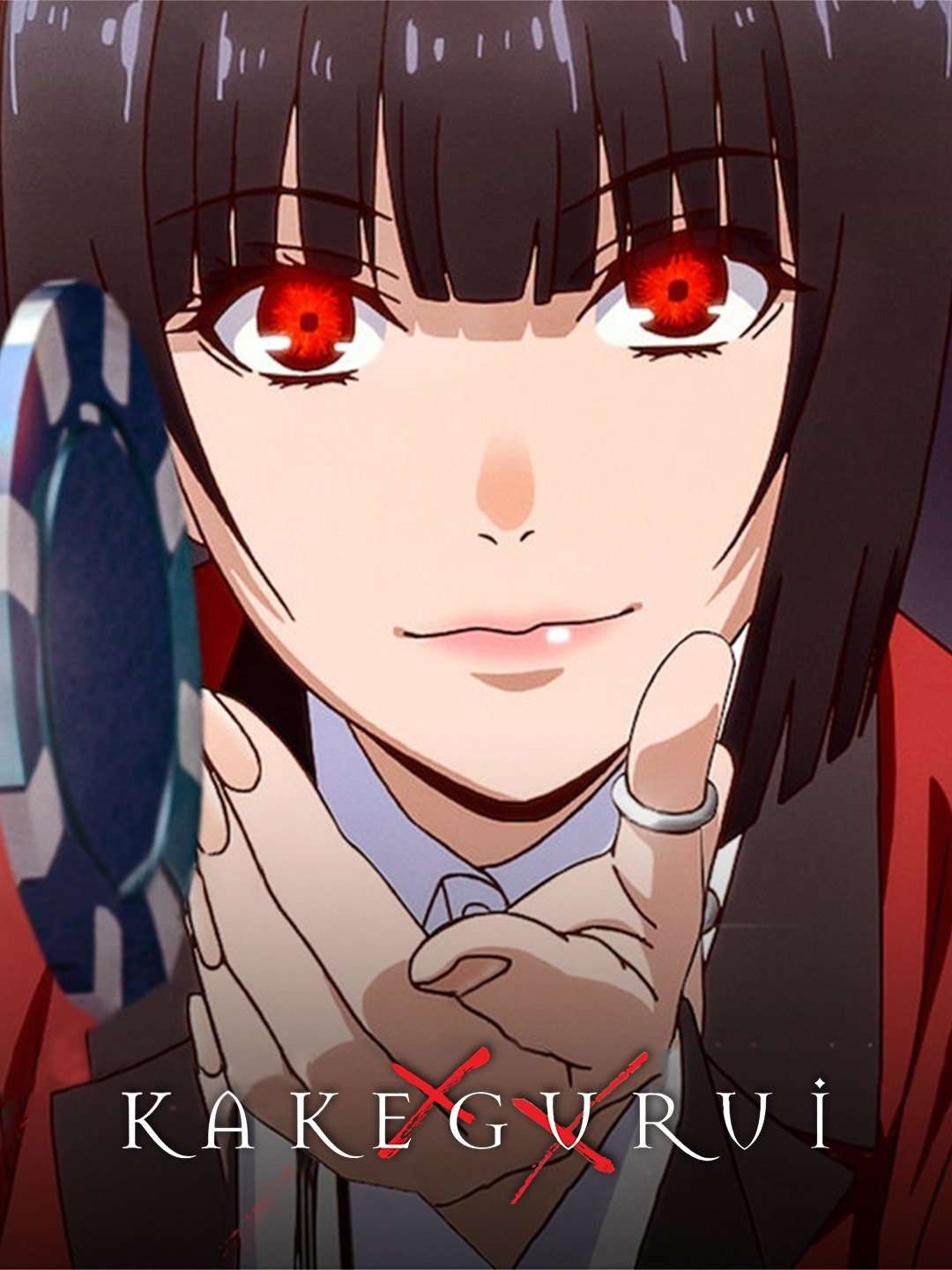
In contrast to many schools, Hyakkaou Private Academy prepares students for life in the real world. Because many of the students are the children of the richest people in the world, the academy has its own quirks.
The school is a normal school by day, teaching its students history, languages, and other subjects. It becomes a gambling den at night, teaching them how to deal with money and manipulate people. The school is dominated by those who come out on top in the games.
A seemingly naive and beautiful transfer student, Yumeko Jabami is ready to try out Hyakkaou’s special curriculum. Rather than play for winning, she plays for the thrill of the game, and her borderline insane approach to gambling may bring a few too many cards to the table.
In Kakegurui, you are immersed in a game that explains how the school works and how insane the show can be.
This show’s characters are eccentric but in a good way. The central characters, Jabami and Suzui, serve as archetypal foils to one another.
By contrasting these elements, the viewer is able to appreciate the show’s mood, humor, and wit even more. With each wagering game having its own set of characteristics, patterns, and spins, the games are designed to look like boss battles from a video game. As a result, the show remains engaging.
The relationships between Jabami and some of the supporting characters reveal fragments of their stories.
This anime steps away from the stereotypical ‘cheap’ win typical of similar anime. Through gameplay and thoughtful dialogue, the Compulsive Gambler reveals their insanity and savvy, rather than introducing their philosophy with cheap narration.
School Rumble

The moment someone says “I love you,” everything changes — that is the bittersweet nature of a high school romance. Tenma Tsukamoto, a second-year student, is determined to confess her feelings to the boy she likes. Delinquent Kenji Harima, who has a substantial reputation, is also in a similar situation, as he cannot properly tell his love what he feels.
Due to school, friends, rivalries, and hobbies, these two will find that high school romance is no easy feat, especially when misunderstandings complicate matters further.
As Tenma and Kenji both try to win the love of those they desire, School Rumble is a high-octane romantic comedy filled with relatable situations.
Every time you feel the story is about to take a serious turn, the series swings back to its comedic nature almost instantly.
This series is probably best known for its characters. On numerous occasions, the series turns from the three or four main characters to some of the background characters, allowing the viewers to learn more about them through some interesting side stories. An entertaining cast that will leave you grinning from ear to ear. Everyone has their own unique personality, but they are all entertaining.
In addition to the story, the way the plot develops is also very interesting. There is no better show to relax while watching if this is your type of humor. It gets funnier as it goes on!
Lucky☆Star
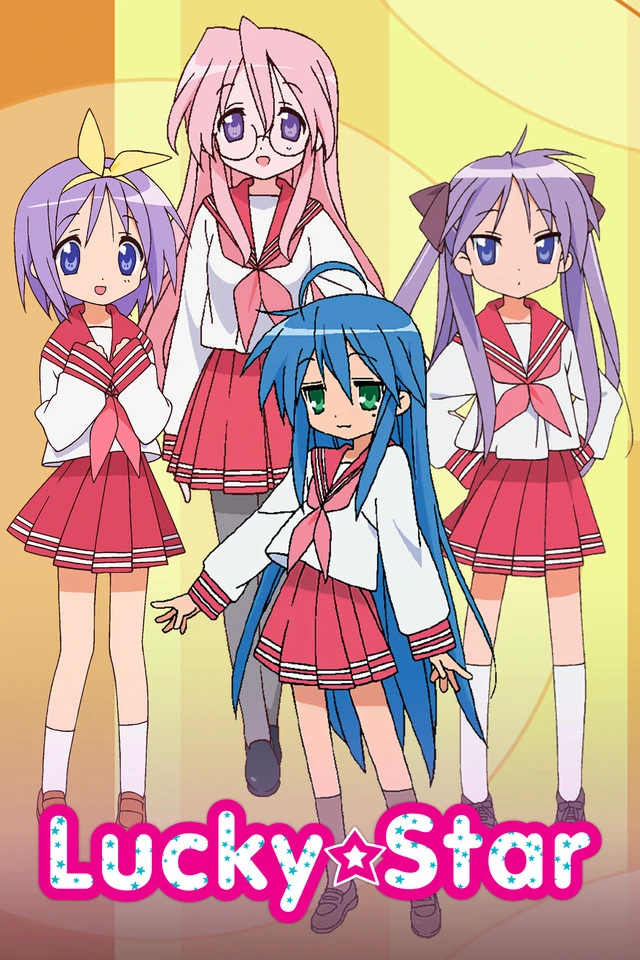
Four cute high school girls appear in Lucky Star – Konata Izumi, the lazy otaku, the Hiiragi twins, Tsukasa and Kagami, and the intelligent Miyuki Takara.
At school and beyond, they develop eccentric and lively friendships and observe the world around them with humor. No subject is safe from their musings, whether it’s a Japanese tradition, otaku culture, academics, or how to prepare and eat various foods.
Lucky Star is one of those rare comedy animes. It manages to put a hilarious twist on everyday situations and has many pop culture references. The entire show follows a more western-style of comedy, a sitcom to be precise, rather than your typical slice-of-life high school comedy anime.
This anime does not have a direct storyline, like most anime shows, but instead concentrates on everyday observations and J-pop culture as its comic source. A show like this covers so many angles and hits so many points so well that it’s impossible to dislike it.
The characters are perhaps the show’s strongest feature. Lucky Star has a great cast. The variety, as well as the way they all fit so well together, really makes the show shine. Regardless of whether you end up liking this show or not, there will be one character that you cannot help but like.
Overall, this is a very enjoyable show. If you enjoy the kind of humor the show presents, this will quickly become one of your favorite shows.
Ao Haru Ride
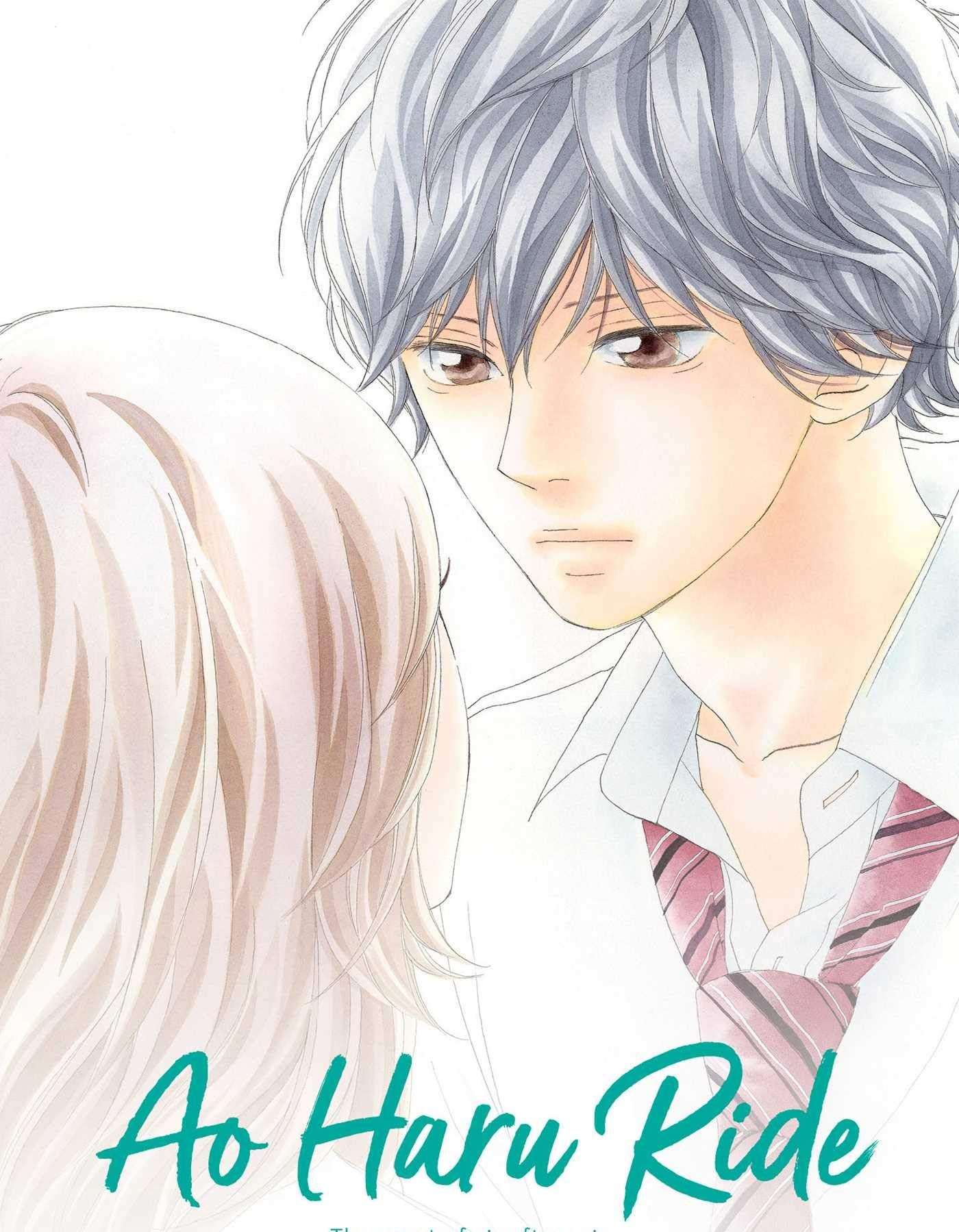
In middle school, Futaba Yoshioka was attractive and popular – well-liked by the boys and despised by the girls. Yet, she managed to brush all that aside since her only concern was the opinion of Kou Tanaka, a classmate she shared a shelter from rain with, as well as quite a few other memorable and meaningful experiences.
She attempted to make plans to meet Tanaka at the summer festival, but a misunderstanding, and Tanaka’s subsequent disappearance, left her alone in the halls of her school.
Futaba, who is now in high school, is not your typical teenage girl. To become a favorite this time, she avoids all unwanted attention and, instead of acting cute and feminine, only stands out for her tomboyish behavior and messy appearance.
Even so, her world is soon turned upside down when the only boy she ever loved suddenly reappears in her life – but he goes by the name of Kou Mabuchi now, and this is not the only change he has undergone.
Each character has a different personality, but they are all part of a story that becomes interconnected in some way. The story develops as circumstances between characters become tenser as they become closer to one another. This show connects relationships in a realistic way that is relatable. Have you ever wondered how love blossoms between people? By pushing the buttons between the characters, Ao Haru Ride shows and tells exactly that.
Considering it is a shoujo series, Ao Haru Ride is surprisingly well-structured. This series has the look and feel of what a shoujo should have, with its characters, visuals, and typical tropes.
Chuunibyou demo Koi ga Shitai!

In every person’s life there has been a time when they believed they were different from the masses of ordinary humans. There is even a possibility that they may believe they are capable of mystical powers, or that they descended from a fantasy realm. It is known as “chuunibyou” and is a source of some of the most embarrassing moments in a person’s life.
The scars left behind by Yuuta Togashi’s chuunibyou are still fresh in his memory. Having been the “Dark Flame Master” during his middle school years, he looks back on those days with extreme embarrassment, so much so that he decides to attend a high school far away from his old school. He longs to put behind him his dark past and live a normal high school life.
Unfortunately, his past is not over yet: enter Rikka Takanashi, Yuuta’s new classmate and a self-described vessel for the “Wicked Eye.” With this eccentric, out-of-place girl in his life, Yuuta’s dream of an ordinary, chuunibyou-free life quickly unravels. It’s a funny and heartwarming story of a boy who just wants to leave behind his embarrassing memories, and his delusions are far from the past.
Comedy and events surrounding its main characters are the focus of the series. Although most of them are anything but normal teens, they still enjoy their high school days.
In the end, Chuunibyou demo Koi ga Shitai! makes for an enjoyable series to watch. In it, a kid tries to escape his past but ends up living it with his new friends at high school. It’s not easy to bring entertainment these days, especially since so many ideas have already been implemented, but this one here is executed well.
Tanaka-kun wa Itsumo Kedaruge
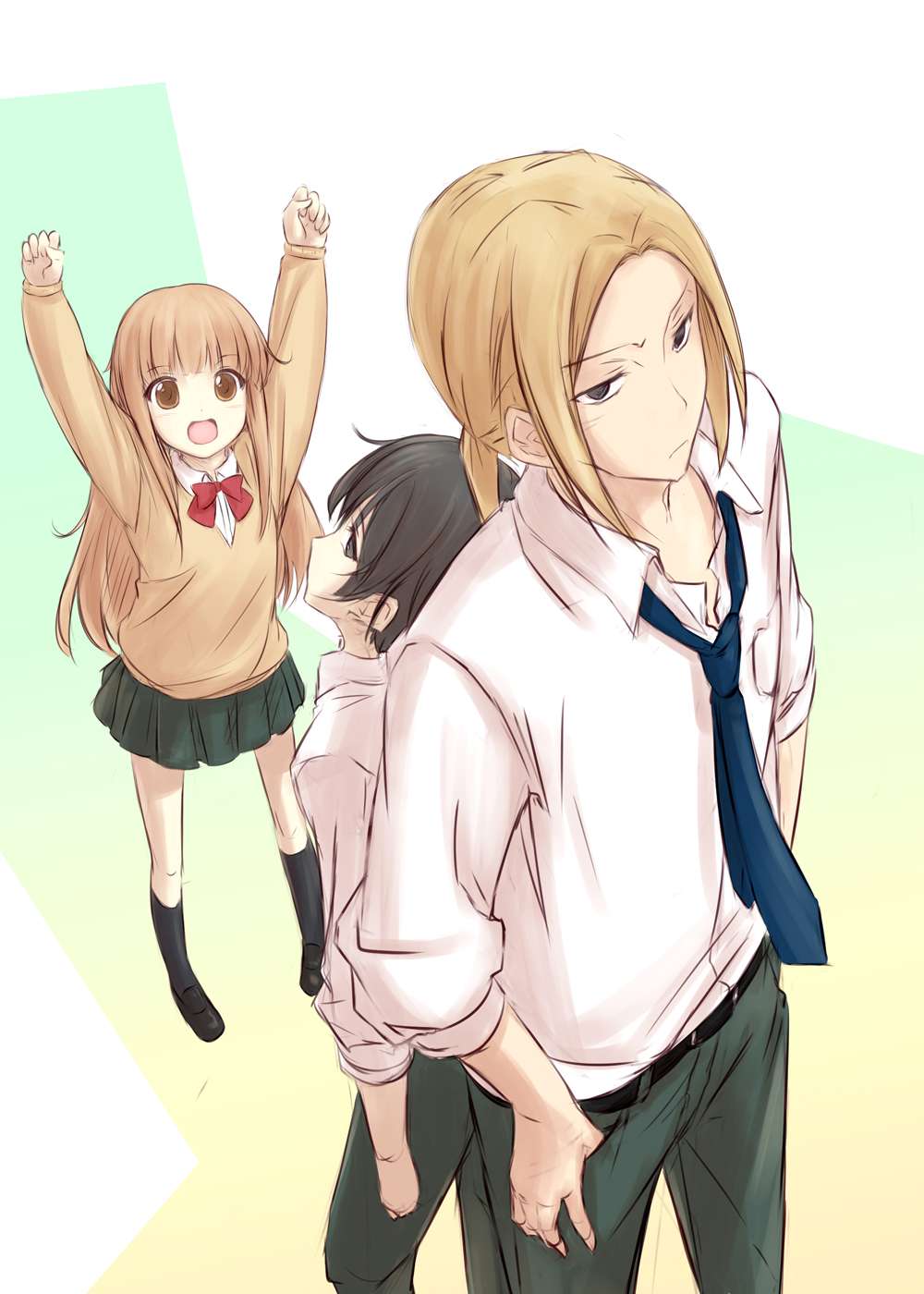
Tanaka is a high school student who lives a listless lifestyle. Known for being inattentive and having the tendency to fall asleep anywhere, Tanaka prays that every day will pass without incident, avoiding situations that would require him to exert himself.
Together with his loyal friend Oota, who assists him with tasks he can’t handle, the lethargic teenager is constantly faced with events that prevent him from experiencing the quiet and peaceful days he longs for.
Despite being a barebones premise, it still ends up being highly entertaining because it leaves a great deal of room for imagination.
There is a good blend of comedy and slice-of-life elements in the show. Borrowing traditional school tropes and clichés, it gives them a listlessness twist that really works. Although the laid-back atmosphere initially seems too dull to be relaxing, the charming cast transforms it.
Whenever an awkward situation occurs, the comedy relies on the character’s reaction. They are not overly exaggerated like in rapid slapstick comedies, they are timed quite well and are given enough time for the audience to react as well.
As bland and uninspired as Tanaka is, these are exactly the reasons he works best as part of a recurring cast that deals with and reacts to his personality. The show acknowledges that listlessness has its problems, but as long as someone is there to help the situation becomes bearable.
As a slice-of-life show, the show is fun as a gentle comedy. This is an anime you can watch after a bad day, where you can truly relax and have a good laugh through the whole thing.
Baka to Test to Shoukanjuu
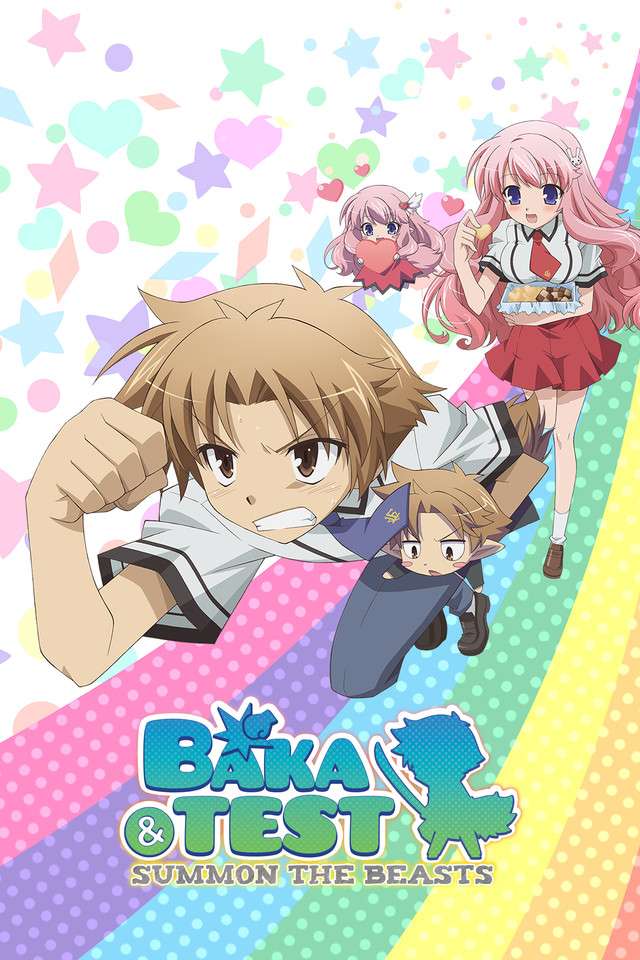
Unlike most Japanese high schools, Fumizuki Academy is unique. In order to sort its students, this unique institution has implemented a new and innovative system. Tests are taken by students at the end of their freshman year that divides the student body. Those scoring the highest are placed in A-class, and the lowest are put in the F class.
Sadly for Akihisa Yoshii, his supposedly “great” intellect wasn’t quite enough to pass such a test, and he is now in F class. In any case, the F class has the worst facilities: not only do the tatami mats have rot and the tables are broken but the equipment and furniture are outdated as well.
The good news is that his friend Yuuji Sakamoto is in the same class, and to everyone’s surprise, the genius girl Mizuki Himeji ended up in the same class due to an unforeseen fever on test day.
In spite of their dissatisfaction with the school’s perks, F class rallies behind Yuuji, hoping to take on the higher-ranked classes by using the school’s Examinations Summon Battle system. In an all-out battle, the participants summon fantasy characters whose power levels are equal to their students’ test scores. Can the F class rise to the top, or will they disappoint everyone and fail?
A lot of comedic styles are available in anime, and Baka to Test to Shoukanjuu uses some of the more popular ones and succeeds with it. This anime is the kind of comedy where the characters themselves, and not necessarily the situation around them, is what makes you laugh. The various character’s personalities all have some sort of specific trait that an experienced anime watcher may recognize, to an extent.
Tonari no Kaibutsu-kun
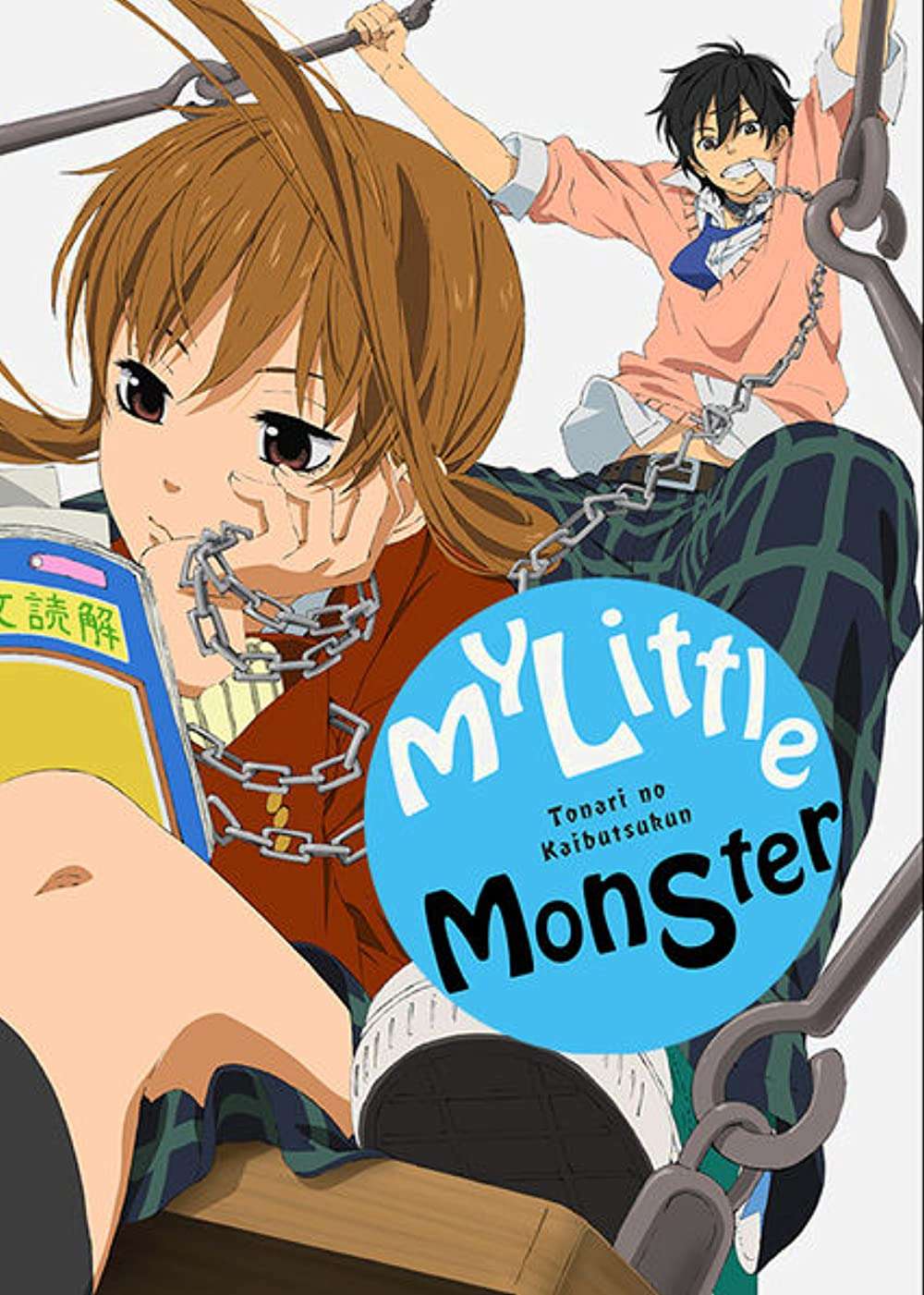
The apathetic Shizuku Mizutani only cares about her grades, not about her classmates. After meeting Haru Yoshida, a violent troublemaker who stopped attending class after getting into a fight early in the school year, her cold view of life changes.
Though he has little understanding of human nature, he is not much different than her as he has no friends. Shizuku is surprised when he declares that she will be his friend and immediately confesses his feelings after meeting her.
As a result of her lack of friends and social interaction, Shizuku struggles to understand her relationship with Haru. Slowly, however, their friendship begins to bloom, and she realizes that Haru is not all violence. While she begins to develop feelings for him, she is unsure of the kind of feelings she is feeling. Together, Shizuku and Haru examine the true nature of their relationship and emotions.
The anime’s premise immediately grabs your attention, and the relationship of the two main characters gradually develops into something truly adorable.
There is plenty of comedy in this anime, as well as themes of light romance and togetherness. This is the perfect anime for anyone looking for a lighthearted show that won’t take up too much time. Featuring lovable characters and always amusing social challenges, high school never gets boring.
Despite the grounded nature of slice-of-life stories, Haru and Shizuku’s struggles with changing feelings provide a compelling arc in this short series.
Tonari no Kaibutsu-kun is the epitome of a light-hearted romantic comedy. This is definitely a slice-of-life comfort anime, but the departure from how character personalities are typically shown is what makes it stand out.
Orange

Naho Takamiya has a difficult start to her sophomore year at high school. She receives a strange letter after waking up late. But the letter is from her ten years from now! Naho is initially skeptical of the note; however, after witnessing several events described, she realizes that it is from her 26-year-old self.
Naho writes that her future life is filled with regrets, and she hopes to make amends for her past mistakes. In the letter, she is also cautioned to keep a close eye on the new transfer student, Kakeru Naruse. Since Kakeru will not be around in the future, Naho must be extra careful when making decisions regarding him. With the letter as a guide, Naho now has the power to protect Kakeru before she regrets her actions once again.
The “power to change the future” associated with the time travel element is less important in Orange than regret, drama, and youth. Orange is a simple, slow-moving drama that, unlike many others of its kind, manages to maintain a level of groundedness.
Due to the fact that these are teenagers, the viewer is likely to be frustrated by some actions that result from misunderstandings and teenage insecurity, however, the drama makes good use of these moments for character development. The plot is straightforward, and the characters are well-developed. In each episode, Naho attempts to avoid or erase regrets, which makes for compelling viewing.
It’s an anime that evokes both positive and negative emotions while also completing its story successfully. This anime is an emotional rollercoaster ride that will have you laughing, crying, and connecting emotionally and personally with the characters.
Karakai Jouzu no Takagi-san

It should be beneficial to have a friend who knows you inside out, but for Nishikata, it is the opposite.
Takagi teases Nishikata every day and uses her extensive knowledge of his behavior to predict how he will respond, making it nearly impossible for Nishikata to make a comeback. In spite of this, Nishikata vows to one day make Takagi blush out of embarrassment when he teases her.
Takagi is an intelligent, cute girl with a crafty mind and a pretty face. Although she is not a prodigy or gifted with extraordinary talents, she often thinks outside the box to outwit her opponent, Nishikata. She also has a youthful charm which makes her quite likable due to her character and personality. Even though she teases Nishikata, it’s more than just teasing. As they interact each time, they grow closer unintentionally as she wants to learn more about him.
In a way, Nishikata is the boy who is defeated by the master of tease, Takagi. Often, the show tries to make the audience anticipate whether he will be able to beat her or not with a thrilling feel.
It’s the type of show that goes beyond just winning. It takes simple games involving erasers to more complicated mind games that involve playing with emotions. In terms of his character and life, Nishikata is an average kid with an average personality.
You will be captivated by the comedy and character chemistry of the main characters. Each episode is funny and never disappoints. Time flies when you’re having fun.
Free!

Haruka Nanase loves the water and is passionate about swimming. During elementary school, he won a relay race with his three friends Rin Matsuoka, Nagisa Hazuki, and Makoto Tachibana. Following their victory at the tournament, the four friends split up.
Several years later, they reunite as high school students, but Rin isn’t interested in returning to the way things used to be. Besides attending a different school, the only thing he cares about is proving that he can swim better than Haruka.
Haruka, Nagisa, and Makoto decide to form the Iwatobi High School Swim Club after the bitter reunion, but one more member is needed if they hope to compete in the upcoming tournament. Rei Ryuugazaki, a former track team member who Nagisa recruits, joins the team. In the lead-up to the competition, the four develop a close bond as they train intensely to be the best and settle Haruka and Rin’s feud once and for all.
While there isn’t anything spectacular about the spot, it’s refreshing; it’s about friendship and loyalty, being able to move forward with the help of others, and having faith in yourself instead of living a lie. There is something beautiful about this series: the idea of true friendship and how friends stay together forever the intricate characterization, and the almost perfect art and sound.
An important aspect of this anime is the emotional side; a lot of the story is told through loaded gestures and hidden meanings. These elements make an otherwise simple story quite interesting.
Despite the predictability of the characters, the development compensates. Characters evolve together, and if you compare the first episode to the last, you’ll easily realize that.
Another
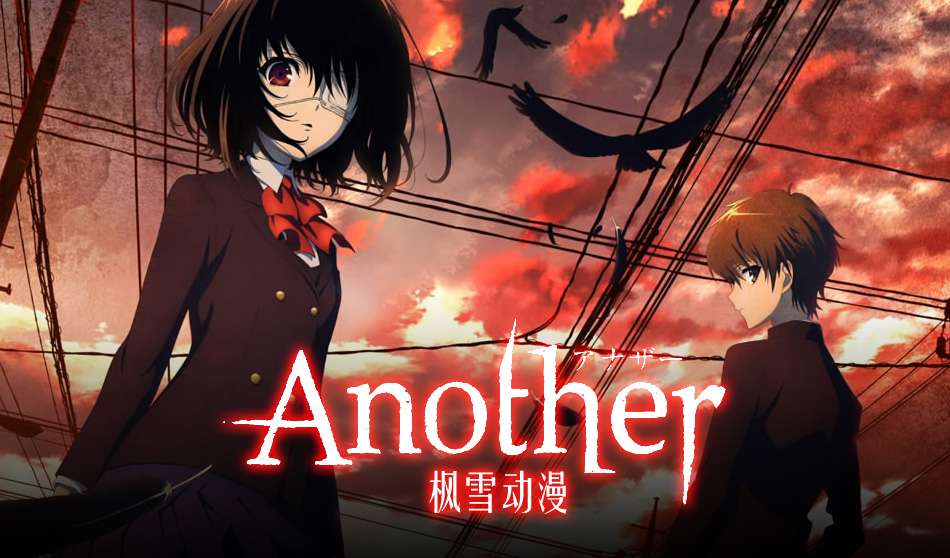
Misaki, a popular student in Yomiyama North Middle School’s class 3-3, passed away during the 1972 school year. From then on, the town of Yomiyama has been surrounded by a fearful atmosphere stemming from dark secrets buried within.
Twenty-six years later, Kouichi Sakakibara, 15, transfers into class 3-3 of Yomiyama North and soon notices a strange, gloomy mood hanging over the entire school. Mei Misaki, an eyepatch-wearing student who is mysterious, also draws his attention, but she is ignored by the rest of the class and by the teachers.
In spite of being warned by everyone, including Mei herself, Kouichi begins to draw closer to her as well as to the horrific occurrences plaguing classes 3-3 of Yomiyama North.
The story follows Kouichi, Mei, and their classmates as they unravel the mystery surrounding inevitable, tragic events-but finding the answer may cost them everything.
When you think you’re getting close to the answer, a new development occurs, and you have to start over. Although this series never goes where you expect it to, it manages to do this without being particularly complicated, which is quite an accomplishment.
A large number of characters and an overloaded storyline lead to confusion and ruin the story. In this series, it’s a simply well-written and carefully plotted storyline involving a relatively small number of characters that proves surprisingly durable over the twelve episodes, avoiding the same cliff-hanger ending with every episode; they’re always managing to throw in a new and interesting twist.
Kokoro Connect

StuCS was formed by five students when they realized there were no clubs for them at Yamaboshi Academy. Yui Kiriyama, a petite karate expert, Taichi Yaegashi, a fan of wrestling, Iori Nagase, a rambunctious optimist, Himeko Inaba, a calm computer whiz, and Yoshifumi Aoki, a clown, make up the club.
Yui and Aoki experience an unusual occurrence when, suddenly and without warning, their bodies are switched. Random supernatural phenomena continue to occur among the five friends, and they realize that it is not just a game. The StuCS are now forced to become closer than ever, and they soon find out about each other’s secrets and emotional scars, which could end up causing them to split.
Kokoro Connect manages to keep its ideas fresh and funny while describing the effects of each phenomenon in an incredibly realistic manner, despite the fact that some of the ideas have been done before. Each arc introduces new and interesting aspects of the story, while exploring different aspects of the characters.
Kokoro Connect seamlessly blends comedic school life shenanigans with serious emotional moments, a testament to the writing and direction. This show is unique in its kind. Instead of following traditional romance anime plots, this anime adds its own flair to something that could be considered “trite and overused.”
Its characters drive Kokoro Connect. It features fully developed, three-dimensional characters with very realistic backstories and flaws, which will make you care about them as their story unfolds, unlike some other school-based comedies. Watching the characters grow and develop is fascinating.
Charlotte

Yuu Otosaka would be just like any other high school student if it weren’t for the fact that he can control people’s minds and bodies. Although it only lasts for five seconds at a time, Yuu’s mysterious power allowed him to rank above his class and get into a prestigious high school where he continues his dishonest acts.
Nao Tomori, the headstrong student council president from Hoshinoumi Academy, catches him in his deception and stops him. Yuu is coerced by Nao to transfer to Hoshinoumi and join the student council. A secret institution, Hoshinoumi Academy is for adolescents with supernatural abilities, with the student council as a means of identifying those who abuse them.
Yuu reluctantly assists in council affairs, and the group sets out to find and protect new ability users. Their further investigation of these abilities, however, entangles them in more complicated matters than they ever imagined.
In Charlotte, we learn about the supernatural lives of these teenagers and the cost of being special.
The story takes off quickly and moves along at a fast yet steady pace, and nothing feels rushed. Superpowers in teenagers are not uncommon in anime. Charlotte, however, tries to embed these superpowers into teens’ everyday lives and is successful in this.
It’s Charlotte’s characters that really make it stand out. There is something about the characters that makes you like and care about them. When something sad occurs to them, you feel sad too. You continue to wonder what will happen to the characters as a result of the well-written characters, which keeps you interested throughout the rest of the story.
Even when this anime reaches its darkest moment, it is still enjoyable. After watching this anime, you will be left with a few questions.
Nisekoi
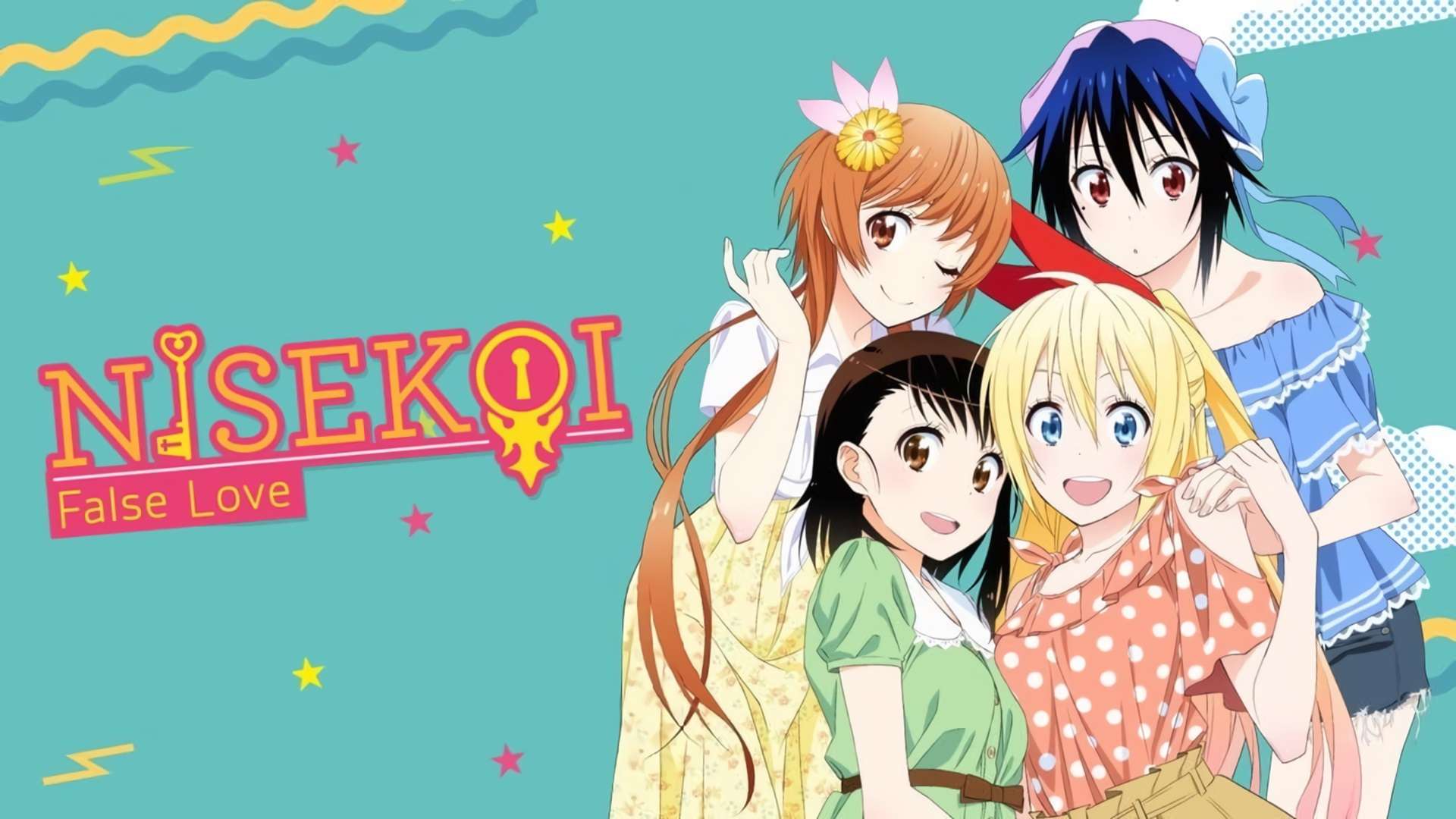
Raku Ichijou is the sole heir of an intimidating yakuza family and a first-year student at Bonyari High School. During his childhood, he had made a promise to his friend ten years ago. As of now, all he has to go on is a pendant with a lock, which he can open only with the key that the girl took with her when they parted.
A couple of years later, Raku has grown into a typical teenager who wants nothing more than to stay uninvolved in his yakuza background while spending school days with his middle school crush, Kosaki Onodera.
Raku’s idyllic romantic dreams are shattered when the Bee Hive Gang invades his family’s territory. To reduce friction between the two groups, he must pretend to love Chitoge Kirisaki, the beautiful daughter of the Bee Hive’s chief.
Unfortunately, the reality is a lot different from their sweet fantasy. Chitoge and Raku dislike each other at first sight, as the girl is convinced he is a pathetic pushover, while in Raku’s eyes, Chitoge is as a savage as a gorilla.
Nisekoi focuses on the daily antics of this mismatched couple who must get along in order to keep the peace in the city. As he encounters many more girls, each tied to some aspect of Raku’s past, his quest to find the girl who holds his heart and promises leads him in unexpected directions.
The anime’s most enjoyable aspect is its cast of characters. There is such a wonderful mix of personalities among them. The characters, for the most part, fit stereotypes that aren’t particularly original. They do, however, fit those stereotypes perfectly and bring out the best in the roles.
Bokura wa Minna Kawai-sou
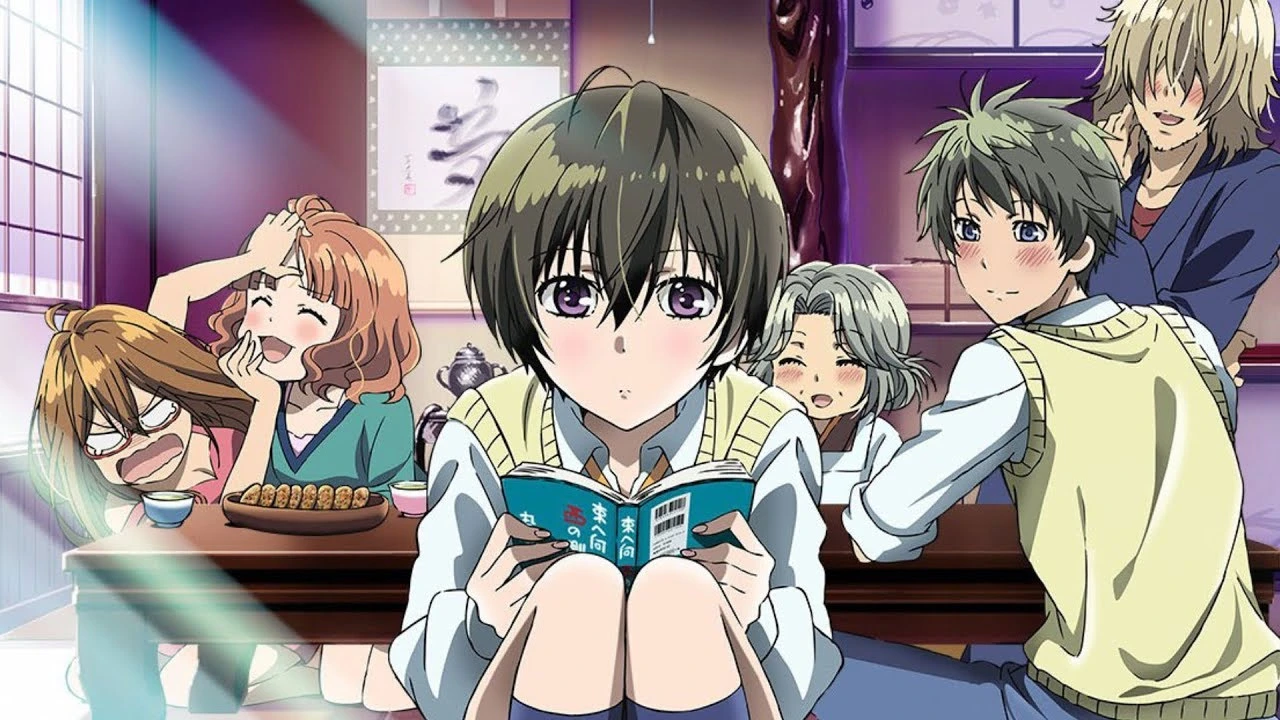
Due to his parents’ new job location, Kazunari Usa will start living alone as a high school freshman. Just recently, he moved out of his parent’s home, so he is eager to enjoy his teen years without the anxiety of dealing with any strange people. However, he soon discovered that his new boarding house, Kawai Complex, is anything but ordinary.
Kawai Complex has a number of eccentric tenants. Shirosaki, Kazunari’s roommate, is a pervert and masochist; Nishikino, a borderline alcoholic who hates couples due to her bad luck with men; and Sayaka Watanabe, an innocent college student who enjoys leading men on.
After finding his new residence lacking decent people, Kazunari is about to leave when he meets shy senior student Ritsu Kawai and finds himself slowly falling in love with her.
It’s a classic and makes people laugh. The show often pokes fun at itself, so expect plenty of comedy. The dialogues and references are full of word plays and gags. The main characters poke fun at themselves at every opportunity as well.
This show is a story of boyhood and girlhood. Instead of seemingly endless layers of love polygons, we get a diverse cast of characters in a simple story. There is no explicit violence or ecchi in the story. Despite some generic jokes going on, the show is a fun experience because of its energy.
Don’t expect relationships to develop in a Cinderella fashion. Shows like this tell stories about youth and growing up with others who are so different. There are many reasons to appreciate the Kawai Complex.
Boku wa Tomodachi ga Sukunai
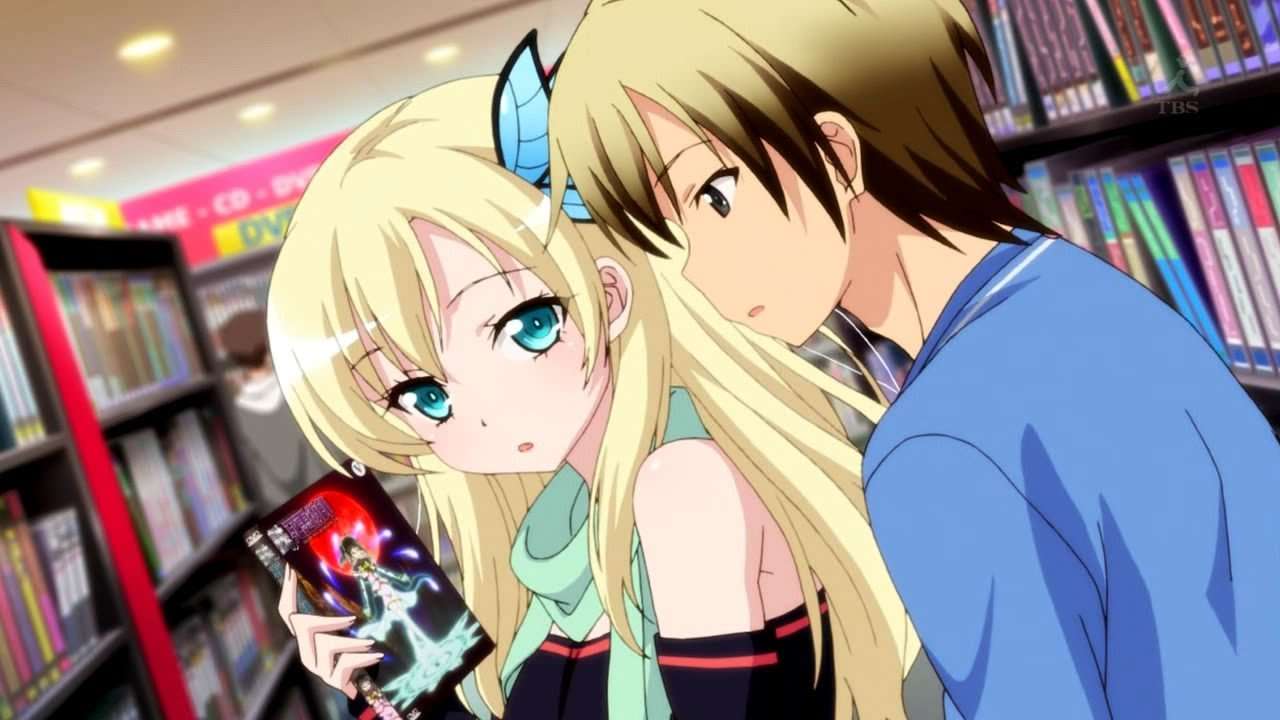
Kodaka Hasegawa is determined to make friends and make a positive impression at his new school when he finds out he is transferring. Kodaka is out of luck when, due to his blond hair and intimidating expression, he is immediately labeled as a violent delinquent.
Even after a month, Kodaka remains alone because of his reputation. In an empty classroom, he finds Yozora Mikazuki talking to her imaginary friend and his life begins to change.
Kodaka and Yozora decide to start a Neighbor’s Club after sharing their experiences in high school with each other. For people with no friends, daily activities teach social skills and how to fit in, which should lead to making friends.
As Kodaka meets the eroge-loving Sena Kashiwazaki and other eccentric outcasts, it looks like he may finally find friends in this club full of hilarious outcasts.
Many of us are born with the ability to make friends, socialize, and talk. Boku wa Tomodachi ga Sukunai, however, is a whole new example of a small group of people and their view of the world.
A utopian world is built on layers, and people face a variety of situations, as the characters of the show do. It is time to shed new light on something so commonly omitted. In it, friends pursue something out of their league, out of envy, and yet, succeed in the end. It shows the perseverance of the protagonists to build character and to achieve what they want through hard work, which is something we should all strive for.

